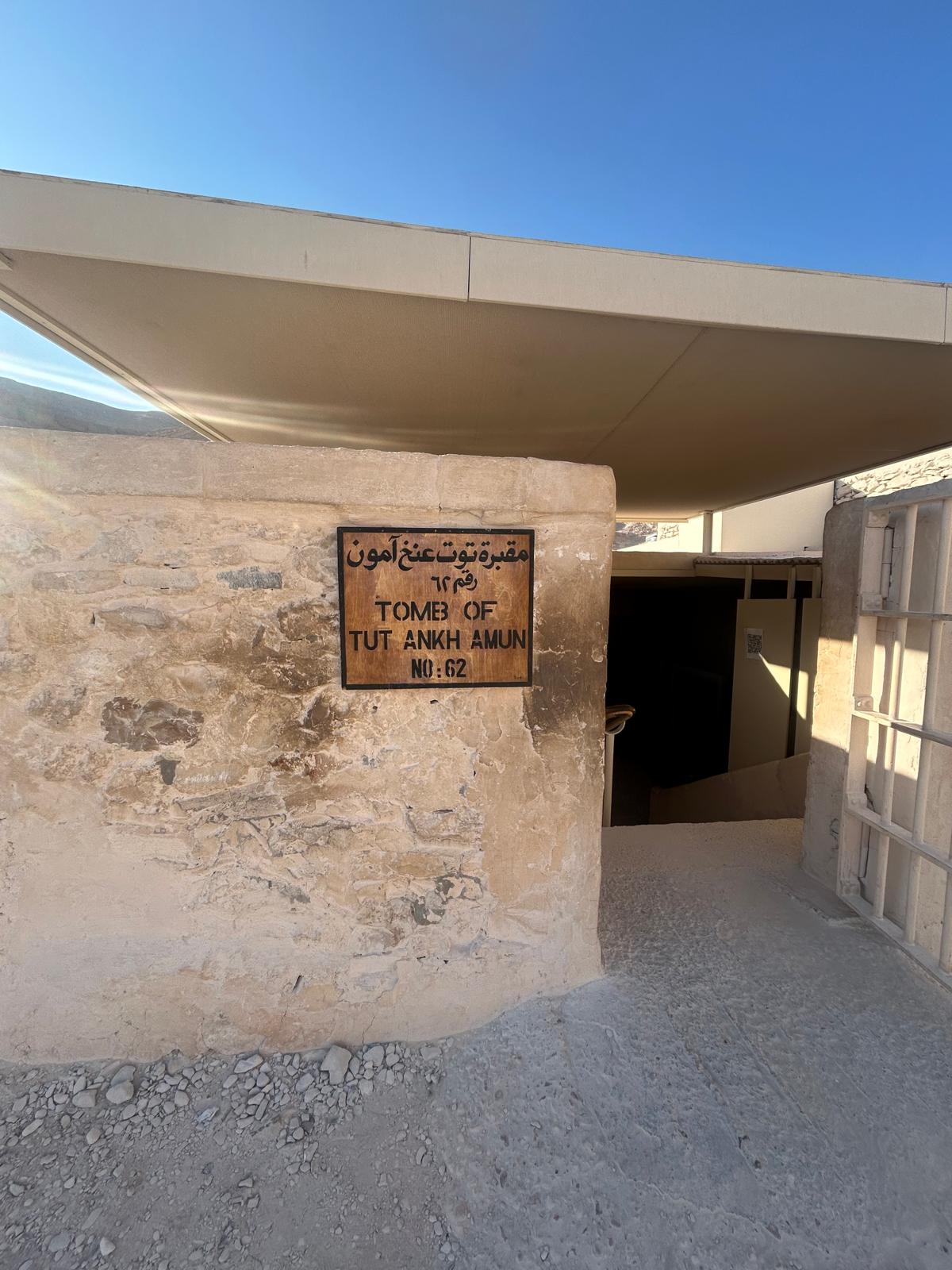.jpg)
Explore the Land of Pharaohs: Egypt Travel Guide
When you think of Egypt, towering pyramids, golden deserts, and stories of ancient pharaohs probably spring to mind—and for good reason. Egypt is one of the oldest civilizations in the world, dating back more than 5,000 years. From the iconic Sphinx of Giza to the bustling streets of Cairo, it’s a place where ancient history and modern life intertwine in the most fascinating ways. Beyond its famous ruins, Egypt is a vibrant country full of color and culture.
Whether you're into archaeology, adventure, or just want to cruise the Nile with a cocktail in hand, Egypt offers something truly unique.
Surprising Facts About Egypt You Might Not Know
More than just pyramids – While the Pyramids of Giza are world-famous, Egypt is home to over 130 pyramids! Many of them are located in areas you’ve probably never heard of, like Dahshur and Saqqara.
The calendar started here – Ancient Egyptians invented one of the earliest known calendars based on the cycles of the moon and the Nile. Their year had 365 days, just like ours.
Women had surprising rights in ancient times – In ancient Egypt, women could own property, initiate divorce, and run businesses. Some even ruled as Pharaohs—like Hatshepsut and Cleopatra.
Cairo is Africa’s largest city – With more than 20 million residents, Cairo is not only the capital of Egypt but also one of the largest cities in both Africa and the Middle East.
Cats were sacred – Egyptians didn’t just like cats—they worshipped them. Killing a cat, even accidentally, could be punishable by death in ancient times. 🐈 👑
Egypt is a scuba diving hotspot – The Red Sea offers some of the world’s clearest waters and richest coral reefs. Places like Sharm El Sheikh and Hurghada are favorites for divers and snorkelers. 🤿 Check the very last picture of this blog.
Travel Tips for Visiting Egypt
Dress modestly, especially when visiting religious sites. Loose, breathable clothing is also a must in the heat.
Stay hydrated, but only drink bottled water. Tap water can upset your stomach!
Bargaining is expected in markets. Don’t be shy—haggling is part of the culture, and it can even be fun.
Learn a few Arabic phrases like shukran (thank you) or la shukran (no, thank you). Locals appreciate the effort.
Hire a licensed guide when visiting major historical sites. They can offer deeper context—and help you skip some lines - check the links below!
Cash is king – always have small bills ready for tips or local purchases.
Don’t skip the Nile cruise! – it's the easiest way to see the temples between Aswan and Luxor.
Visit in late October/early November (we did) – fewer tourists, milder weather (30ish Celcius/ 85 Fahrenheit), better prices.
Top Attractions & Experiences in Egypt
The most touristic places to visit are: TripAdviser - Things to do in Egypt
How We Explored Egypt on a Budget – 12 Days of Magic Without Breaking the Bank
Egypt was one of those dream destinations we always talked about—but we didn’t want to wait until we had thousands to spare. So, we planned smart and traveled even smarter. From pyramids to the Red Sea, here’s how we saw some of the most iconic sights in Egypt.
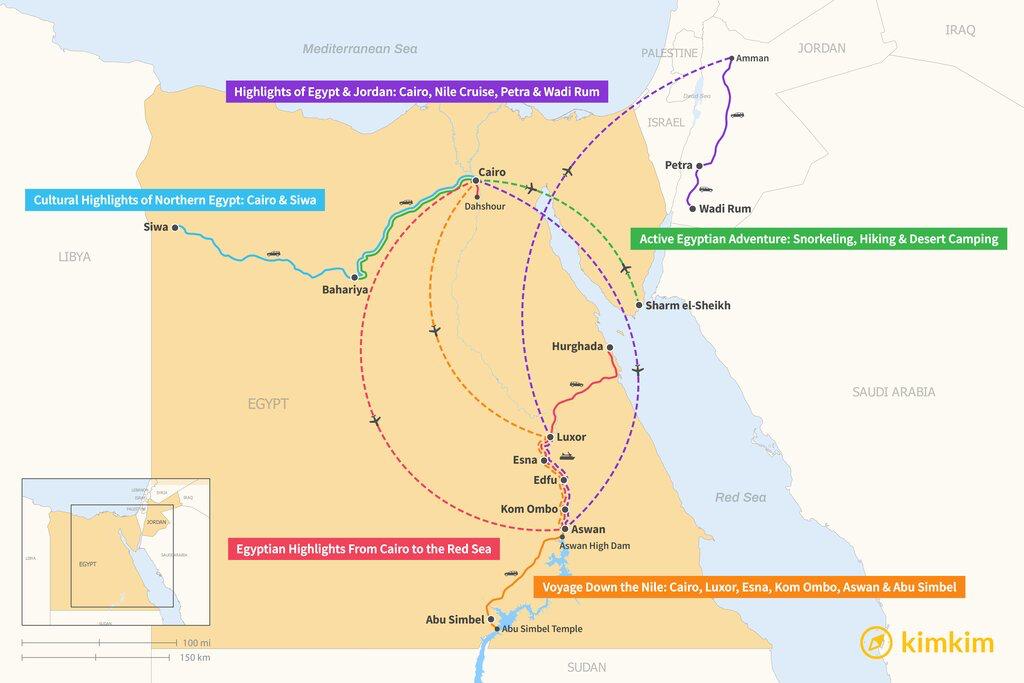
We travelled all the way from the north of Egypt (Cairo) to Luxor, then all the way down to Abu Simbel. Afterwards, we rented a private transfer to Hurghada.
Day 1: London, UK to Cairo, Egypt
Our adventure started with an early British Airways flight from London, UK to Cairo, Egypt -$300. We checked into a well-rated but affordable hotel in Cairo for just $40/night.
We stayed 4 night in New Start Zamalek Hotel. It was a very elegant and modern area in Cairo, full of caffes and restaurants. Easy walkable full of local entertaiments.

View on Cairo
Days 2: Cairo’s Ancient Wonders
The Pyramids of Giza ($65 tour with hotel pick-up). It was a Private Day Tour to see Giza Pyramids, Sphinx, Memphis and Saqqara.
We started this Egyptian highlights private tour out with easy, stress-free pickup from Cairo or Giza. Entry to all attractions is included with this tour, along with bottled water for convenience. Plus, this tour is just for your own private group. Once the tour is finished, they drive you back to the hotel.
The Giza Pyramids, also called the Giza Necropolis, is the site on the Giza Plateau in Greater Cairo, Egypt that includes the Great Pyramid of Giza, the Pyramid of Khafre, and the Pyramid of Menkaure. All were built during the Fourth Dynasty of the Old Kingdom of Ancient Egypt. They were popularised in Hellenistic times, when the Great Pyramid was listed by Antipater of Sidon as one of the Seven Wonders of the World. It is by far the oldest of the ancient Wonders and the only one still in existence.
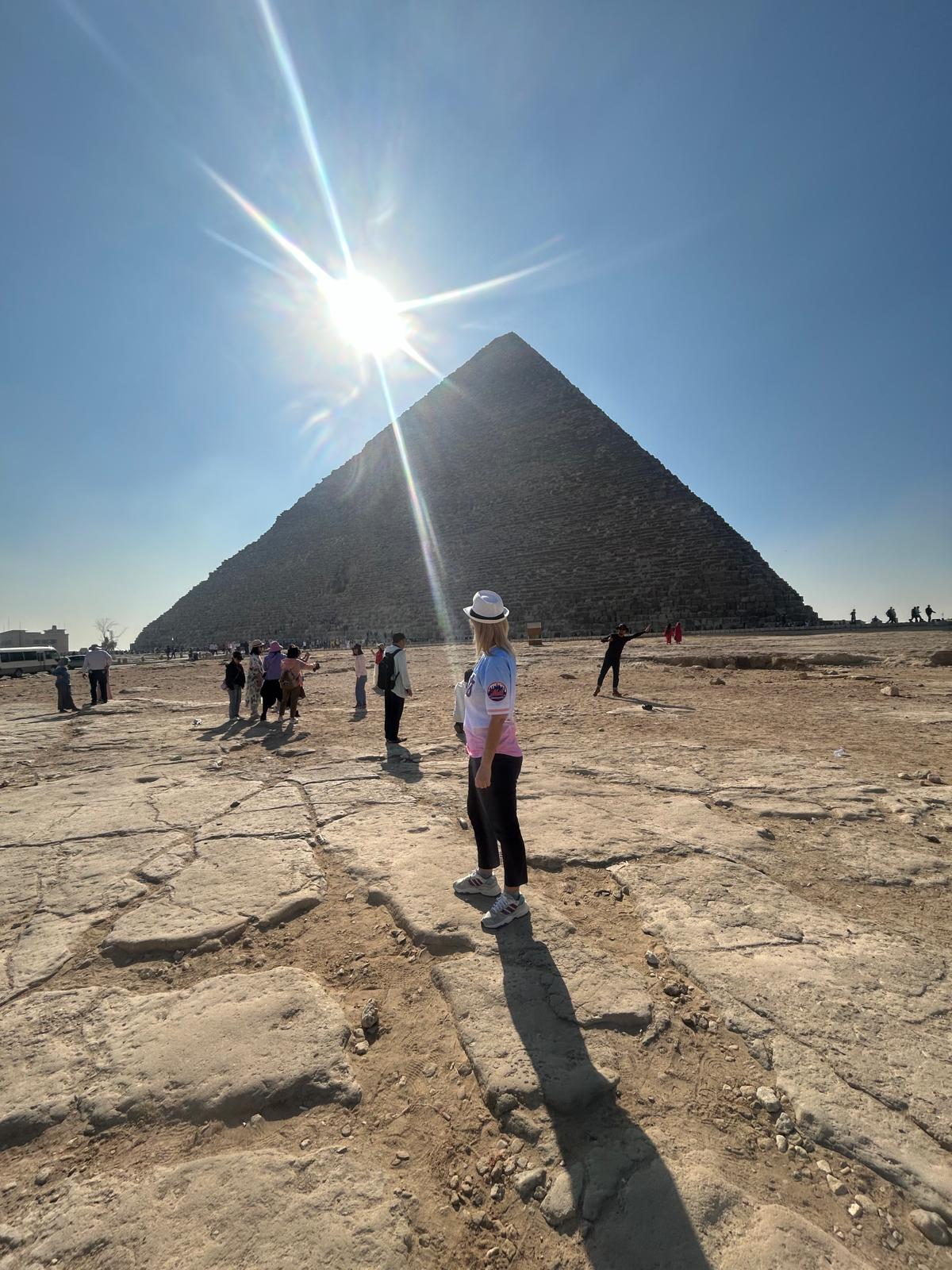
The Pyramids in Giza
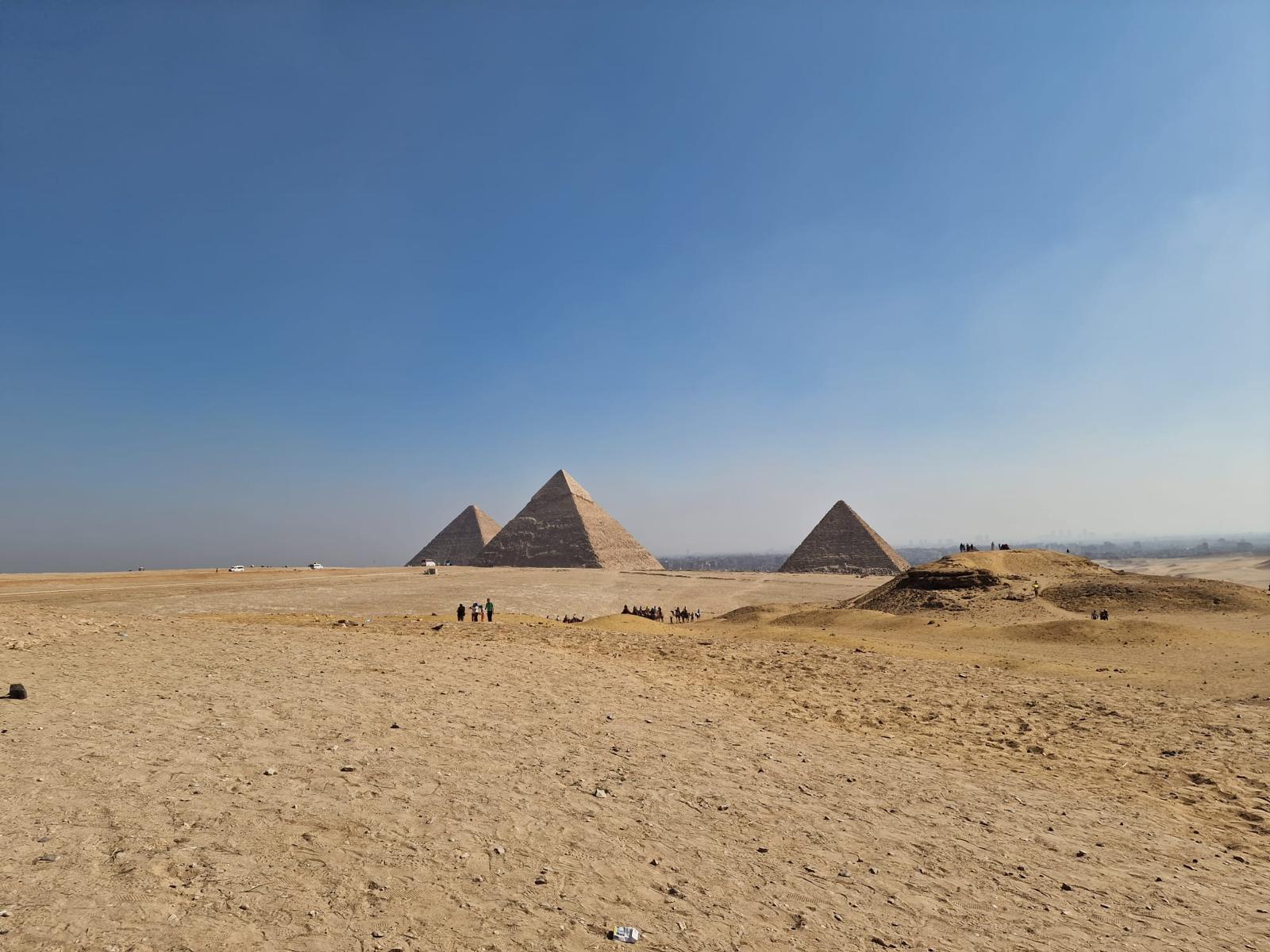
The Pyramids in Giza

Surroundings
Riding a camel is a great optional experience. It costs $10 -$15 per person per ride. They accept cash only, unless booked via Viator. Remember to bring some spare change ($1-3) for tipping the person who will be taking your pictures.
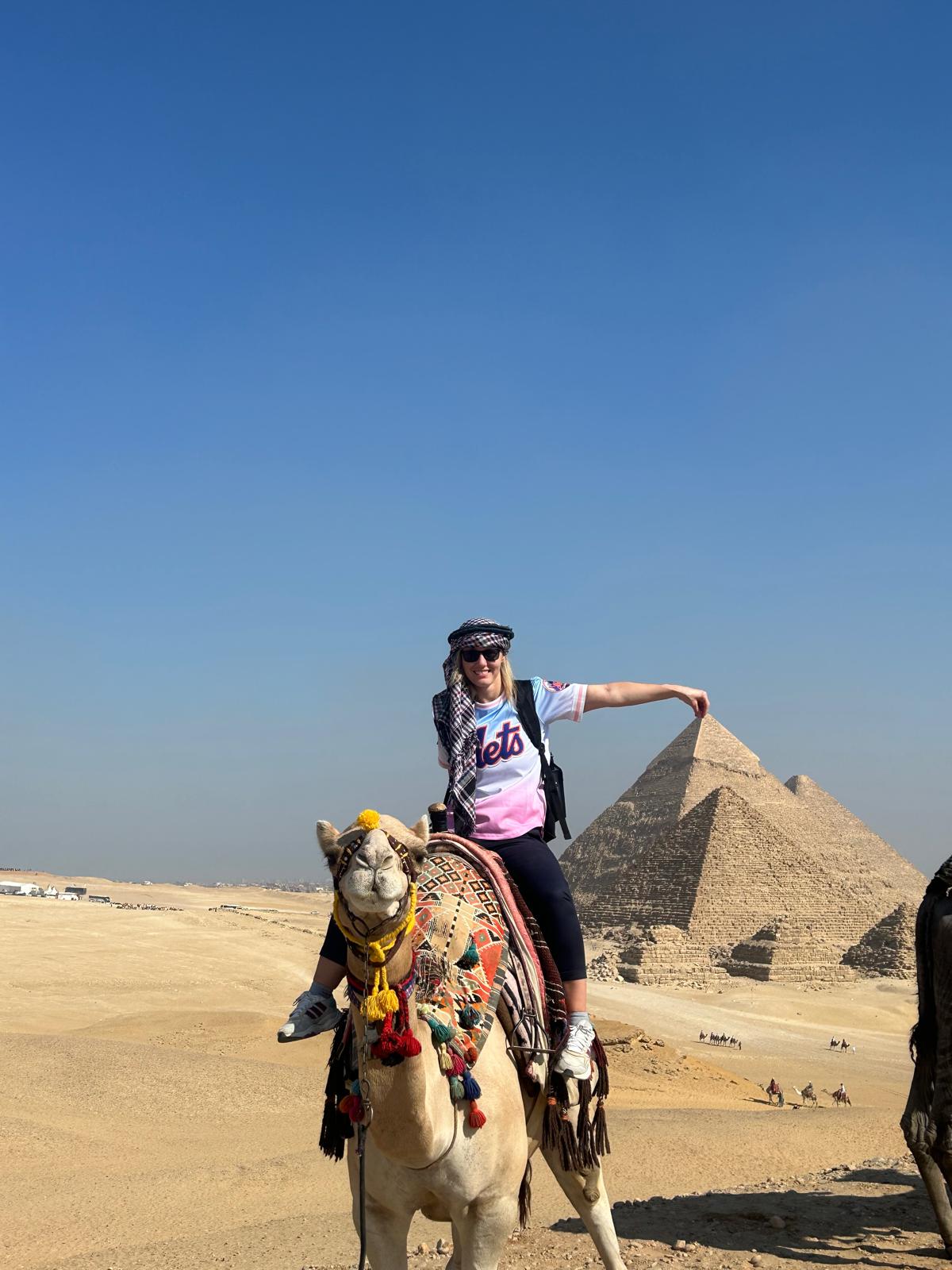
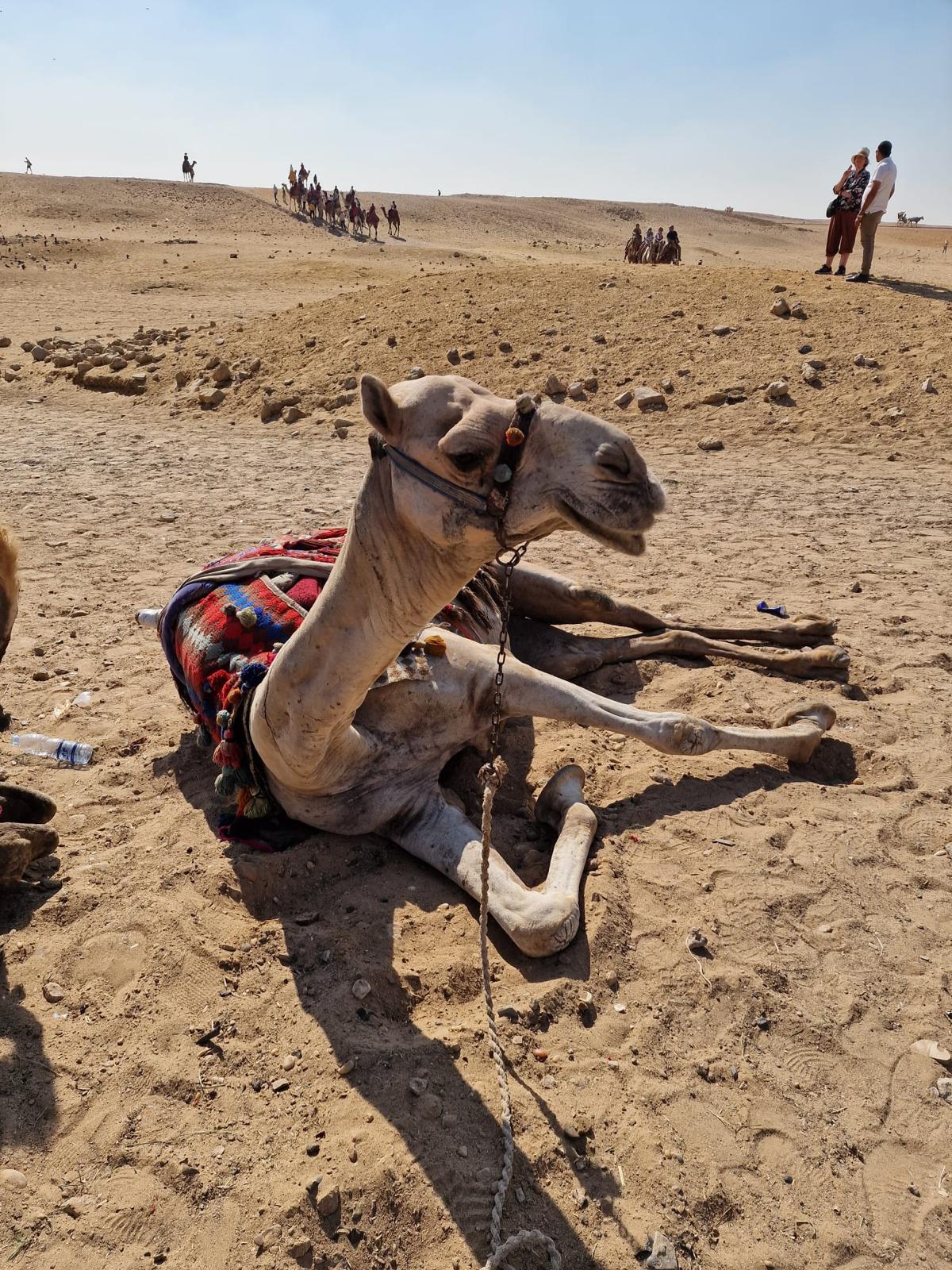
The Great Sphinx of Giza - a mythical creature with the body of a lion and a head of a human. It stands on the Giza Plateau on the west bank of the Nile in Giza. The face of Sphinx is belived to represent the pharaoh Khafre. It measures 73 m (240 ft) long from paw to tail, 20 m (66 ft) high. Build c. 2558-2532 BC.
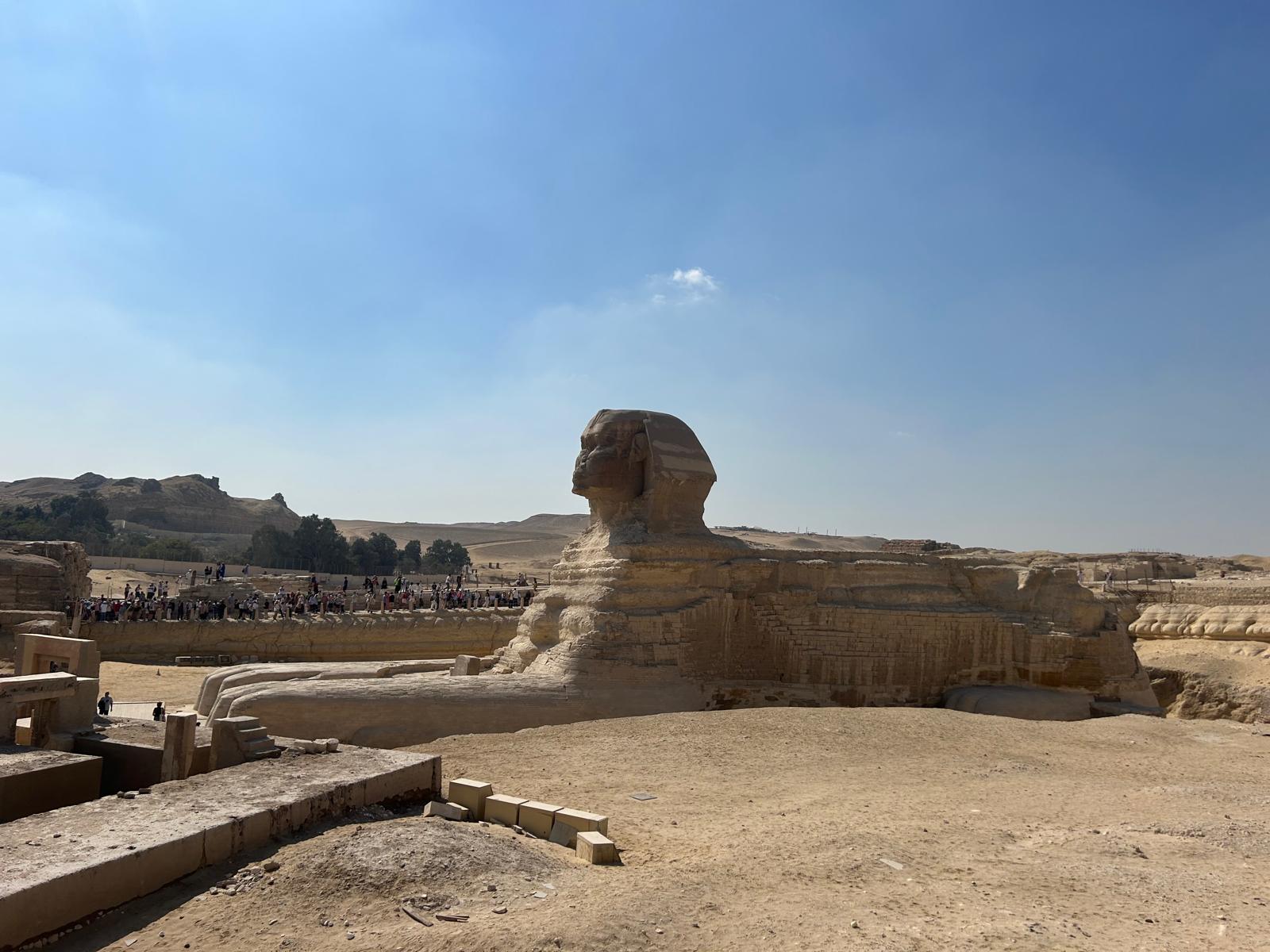
The Great Sphinx of Giza
Saqqara (Sakkara) Pyramids - Step Pyramid (Build for king Zoser)
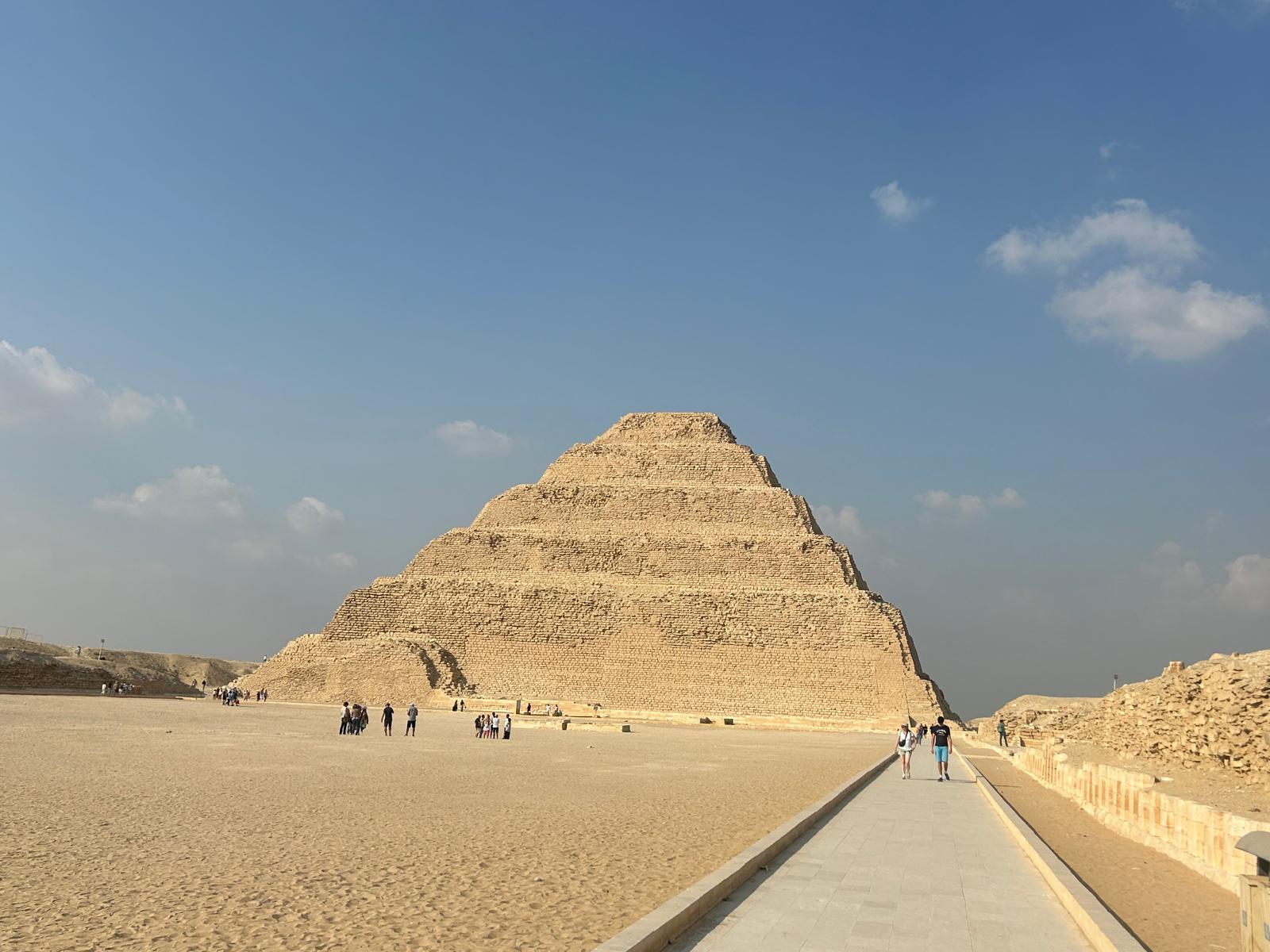
Saqqara (Sakkara) - Step Pyramid
The Memphis City - which dates back to 3100 BCE!
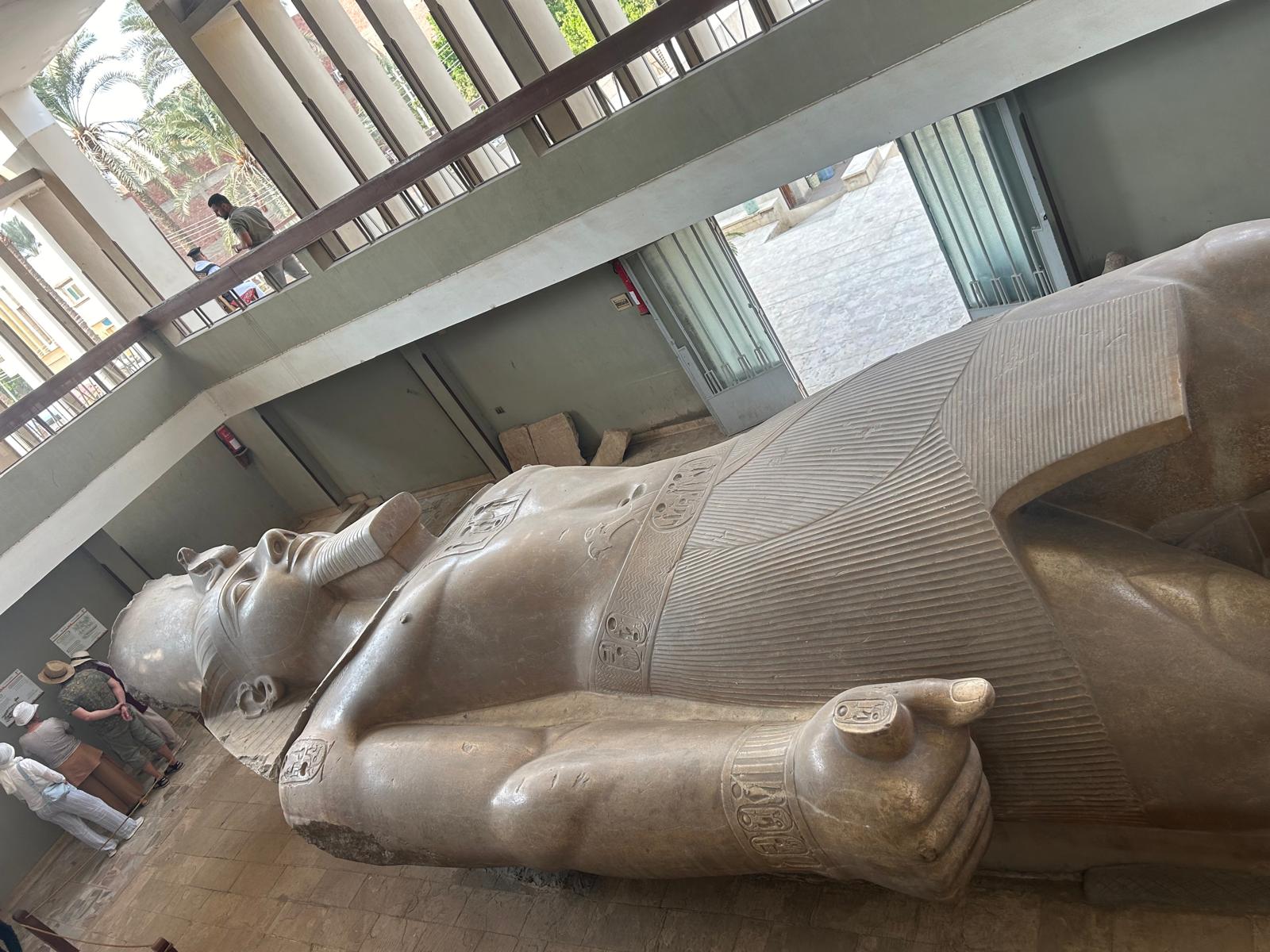
The Colossus of Ramesses II

The Alabaster Sphinx - The Temple of Ptah
Day 3:
The National Museum & Old Cairo ($45 tour with hotel pick-up). It was a Private Tour to see National Museum Of Egyptian Civilization NEMC, Cairo Citadel and Old Cairo.
National Museum Of Egyptian Civilization NEMC, the main Exhibition Hall show the four main crafts that shaped the Egyptian civilization: pottery, wood, textile and ornaments. You can see over there the oldest prosthetic toe all over the world, the skeleton of a man dates back to 30,000 years ago. Also, you can see the Kaaba key, Clepsydra which an ancient time measuring device and for sure you will see all the royal mummies! (no pictures were allowed) which were moved in a royal parade from the Egyptian museum to the civilization museum.
.jpeg)
The National Museum in Cairo
.jpeg)
The National Museum in Cairo
Cairo Citadel - Visit one of the oldest citadels in Egypt. There, you will enter one of the most beautiful mosques in the country — the Mohamed Ali Mosque, also known as the Alabaster Mosque due to its alabaster-covered walls. The Great Mosque of Muhammad Ali Pasha, or the Alabaster Mosque, is located in the Citadel of Cairo and was commissioned by Muhammad Ali Pasha between 1830 and 1848.
.jpeg)
Cairo Citadel
.jpeg)
View on old Cairo

The Mohamed Ali Mosque - (The Alabaster Mosque)
.jpeg)
Interior - The Alabaster Mosque - (The Mohamed Ali Mosque)
.jpeg)
Interior - The Alabaster Mosque - (The Mohamed Ali Mosque)
.jpeg)
Interior - The Alabaster Mosque - (The Mohamed Ali Mosque)
.jpeg)
Interior - The Alabaster Mosque - (The Mohamed Ali Mosque)
Old Cairo - Then visited Old Cairo, also known as Christian Coptic Cairo, one of the most important locations visited by the Holy Family, where the spiritual impact of their presence is still strongly felt. There, you will be able to visit and enter the Church of Abu Serga and St. Barbara, the Hanging Church, and the old Jewish synagogue — Ben Ezra Synagogue. This is a must see part of Cairo!!
.jpeg)
Abu Serga Church, Old Cairo
.jpeg)
The most interesting feature is the crypt where Mary, Joseph and the infant Jesus are said to have rested. The crypt is 10 meters deep and, when Nile levels are high, is often flooded.
.jpeg)
The crypt
.jpeg)
The Holy Family drank water from here
.jpeg)
The Ben Ezra Synagogue - Jewish Synagogue
Day 4:
A guided mosque tour including some of Cairo’s most stunning Islamic architecture ($8). At the end we visited Khan Al-Khalili - it is worth a visit, however a quality of the souvenirs is better in other places.
Al-Rifa’i Mosque – A grand 19th-century mosque built to complement the nearby Sultan Hassan Mosque, symbolizing modern Egypt’s link to its Islamic past.
Mosque-Madrasa of Sultan Hassan – A massive 14th-century Mamluk mosque and school, known for its size and housing all four Sunni schools of thought.
Al-Azhar Mosque – Founded in 970 by the Fatimids, it's Cairo’s first mosque and a major center of Islamic learning.
Al-Emam Al-Hussein Mosque – A sacred site believed to house the head of Prophet Muhammad’s grandson, Imam Hussein.
.jpeg)
The Islamic Cairo
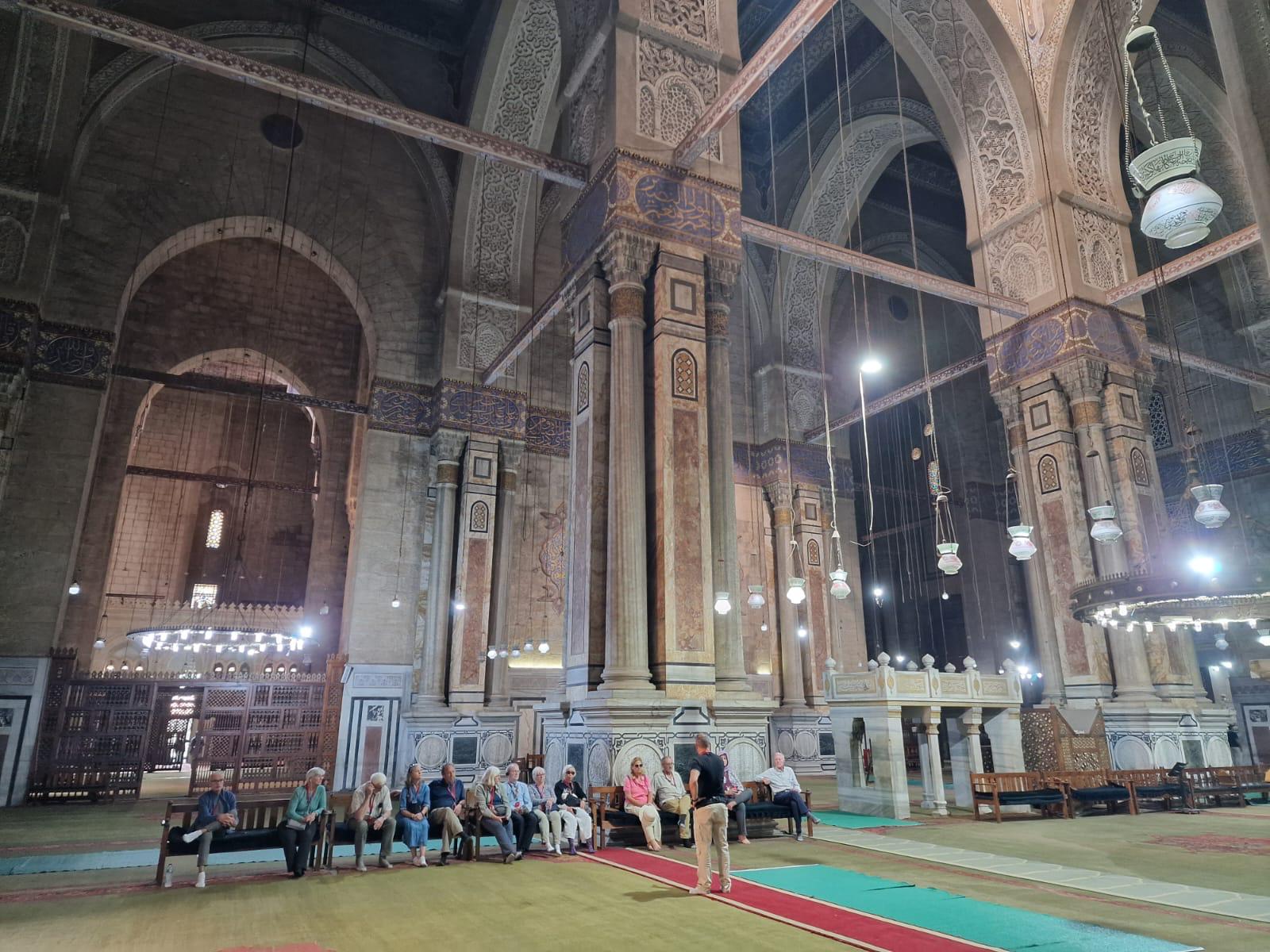
Interior Mosque-Madrasa of Sultan Hassan

.jpeg)
Tombs in the Al-Rifa'i Mosque, Islamic Cairo
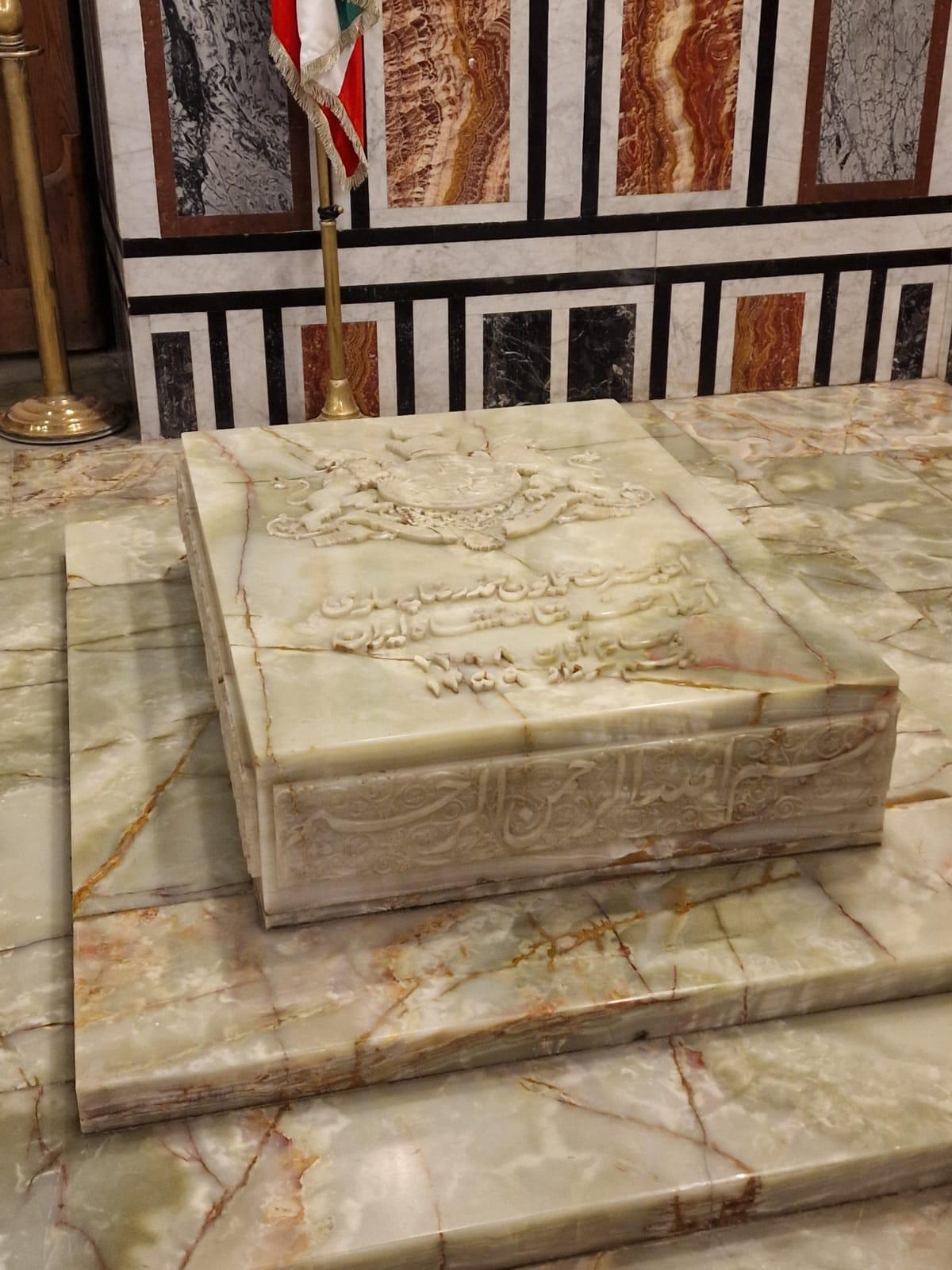
The tomb of Mohammad Reza Shah Pahlavi, the emperor of Iran at Al-Rifa’i Mosque
Day 5: Aswan from Cairo
We stored our luggage at Madina Hostel while waiting for our evening flight to Aswan (there were two options, Egypt Air or Air Cairo, we chose Egypt Air for $120). Lodging in luxurious Obelisk Nile Hotel Aswan with a breakfast for $70 pp. The Nile view was amazing! :)
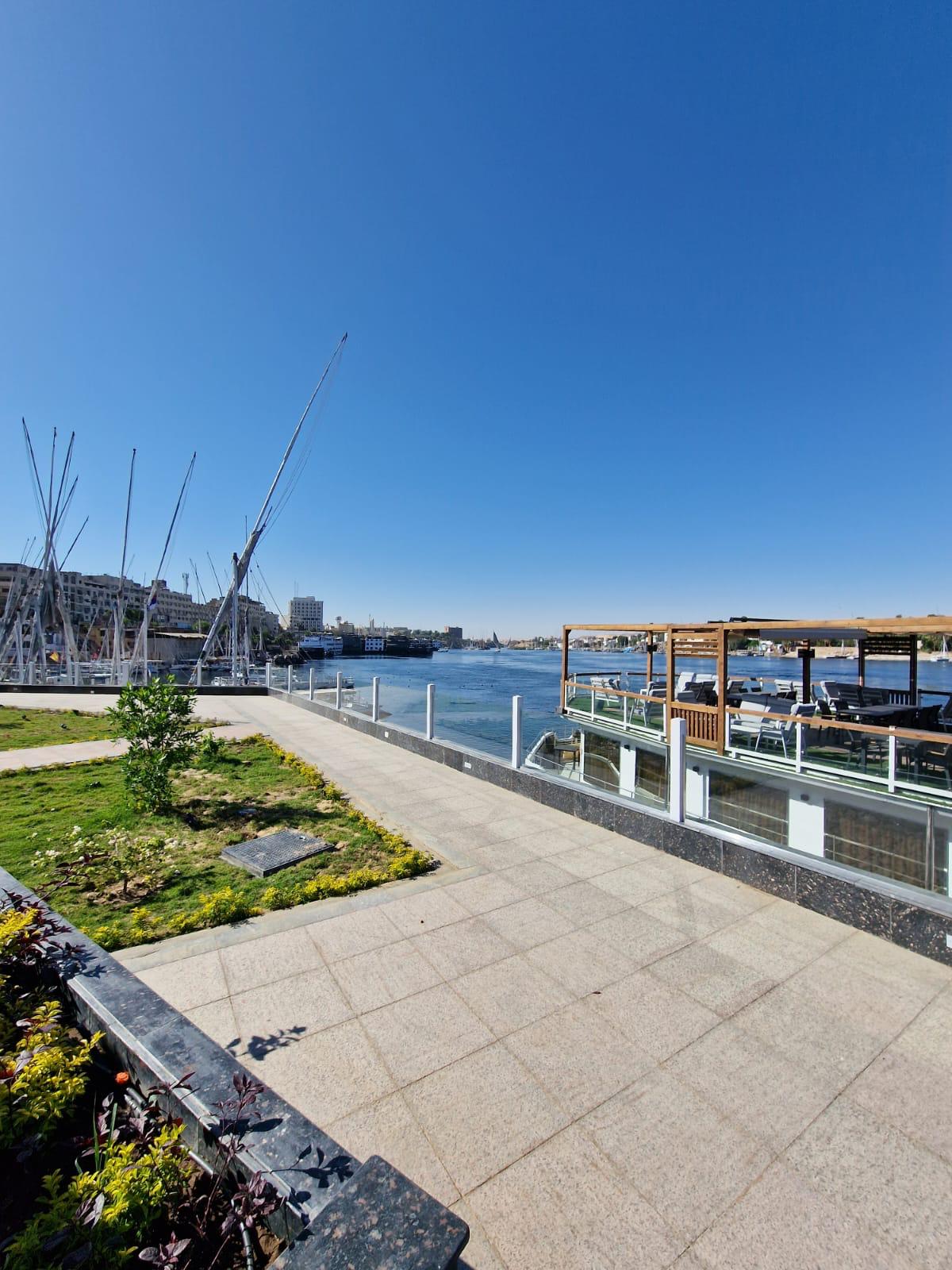
Our view from the Obelisk Nile Hotel in Aswan
Days 6–8: Nile Cruise
This was our splurge—and it was worth every penny!
A 3-day Nile cruise -($550) from Aswan to Luxor, with optional hot air balloon rides. It included all meals, accommodation, and guided visits to ancient temples.
On Day 1 of the cruise, we were picked up in Aswan, we went to see the Unfinished Obelisk led by a trained Egyptologist, then Philae Temple (accessible only by boat), and Aswan High Dam. You can choose to join a group or upgrade to a private guide. The day ends with a buffet dinner and overnight stay in your private cabin on the cruise. 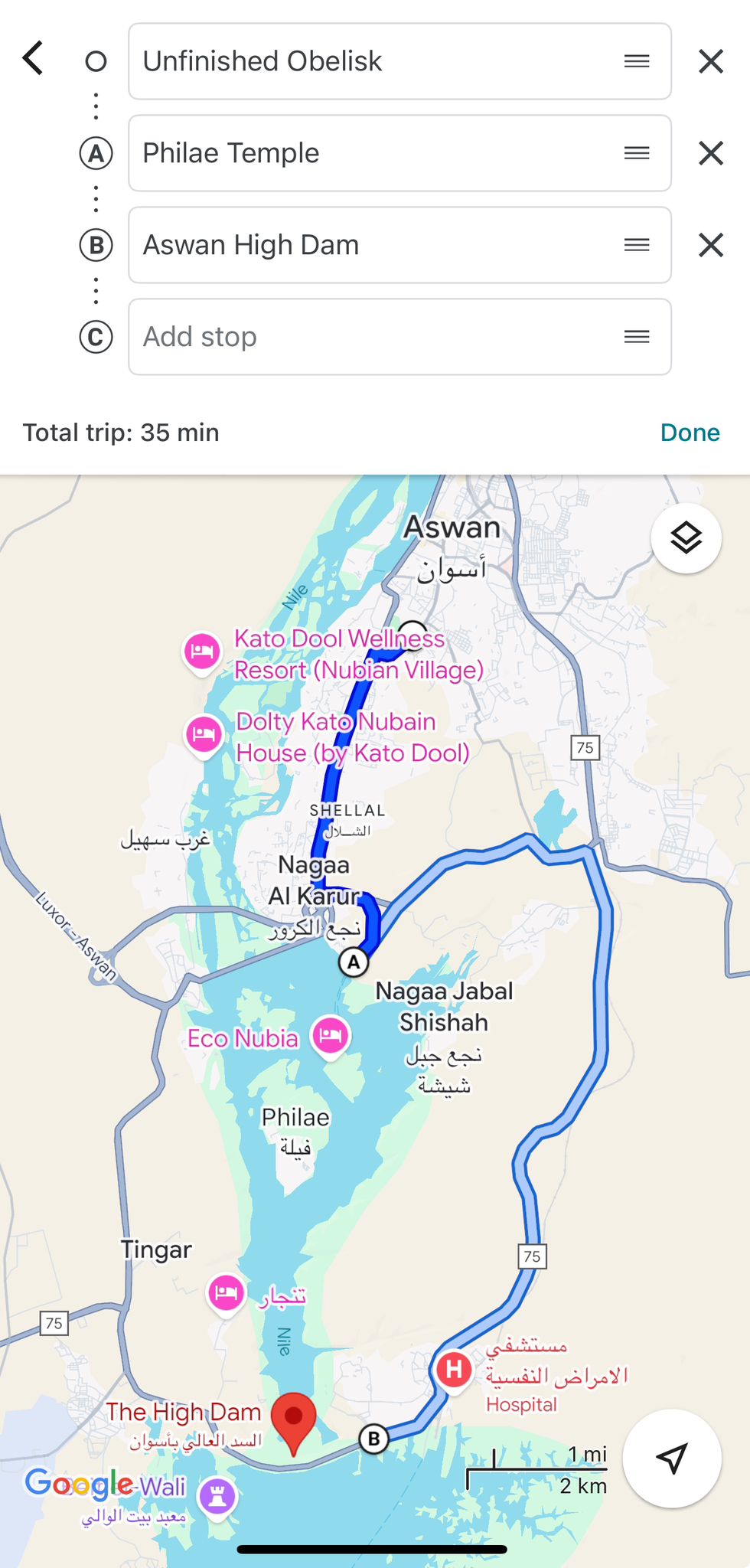
.jpeg)
The Unfinished Obelisk - it would be the biggest obelisk in the world, but it is unfinished. You will find out why.
.jpeg)
The Unfinished Obelisk
.jpeg)
We travelled to the Philae Island by boat
.jpeg)
Just a few minute boat ride with spectacular views
.jpeg)
The Philae Temple from distance
.jpeg)
.jpeg)
.jpeg)
.jpeg)
The local Egyptian cat :)
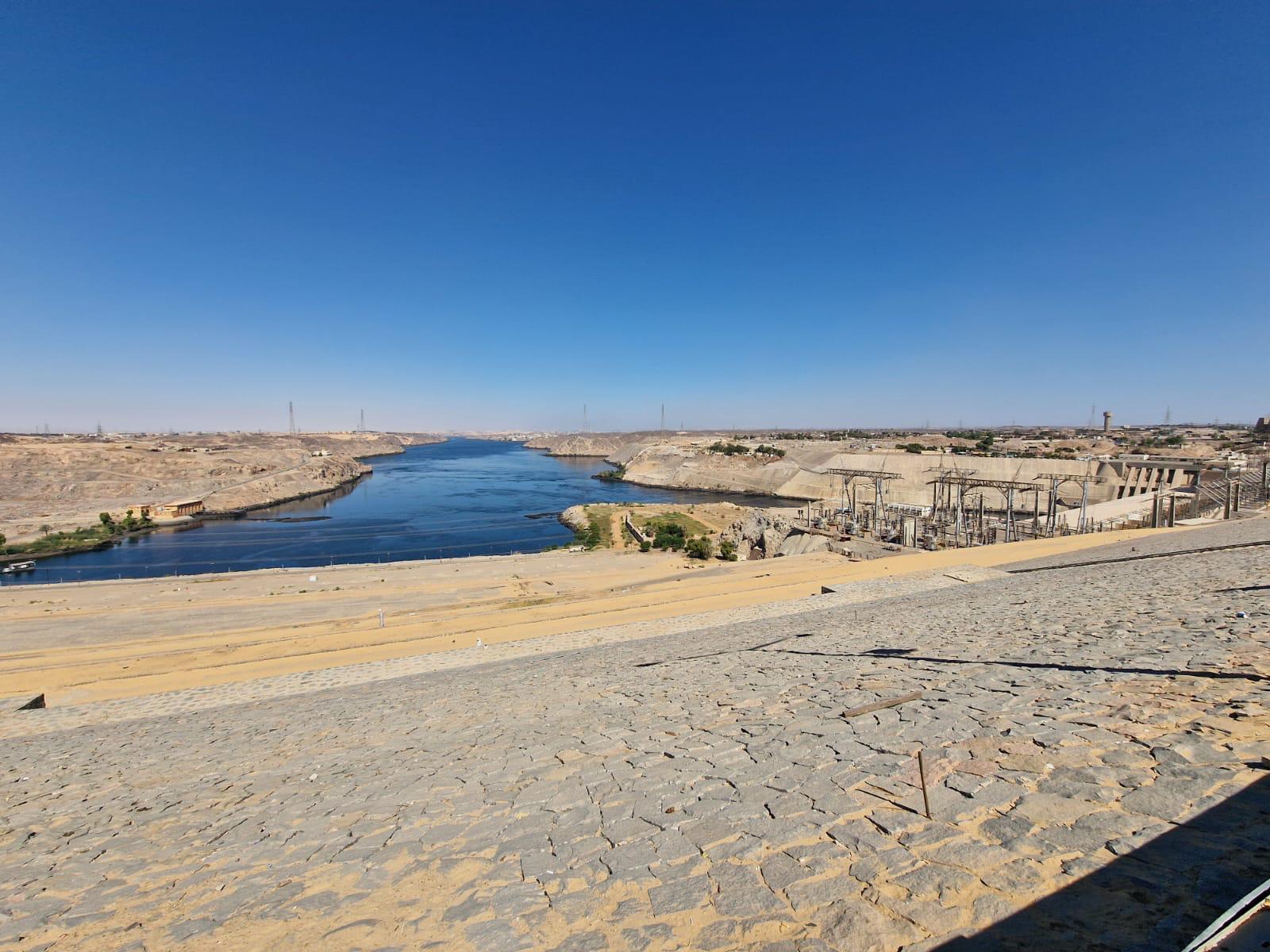
Aswan High Dam - The biggest dam on the longest river in the world (The Nile River), the dam was built at 1961.
Day 2 of the cruise: an optional early morning excursion to Abu Simbel is available at an extra cost of $100 per person (which we did) to your private guide— and it’s absolutely worth it! However, you can get it cheaper if you book it separetly with Viator. The trip involves a 3.5-hour drive (with a coffee break) to the very south of the country, near the Sudanese border.
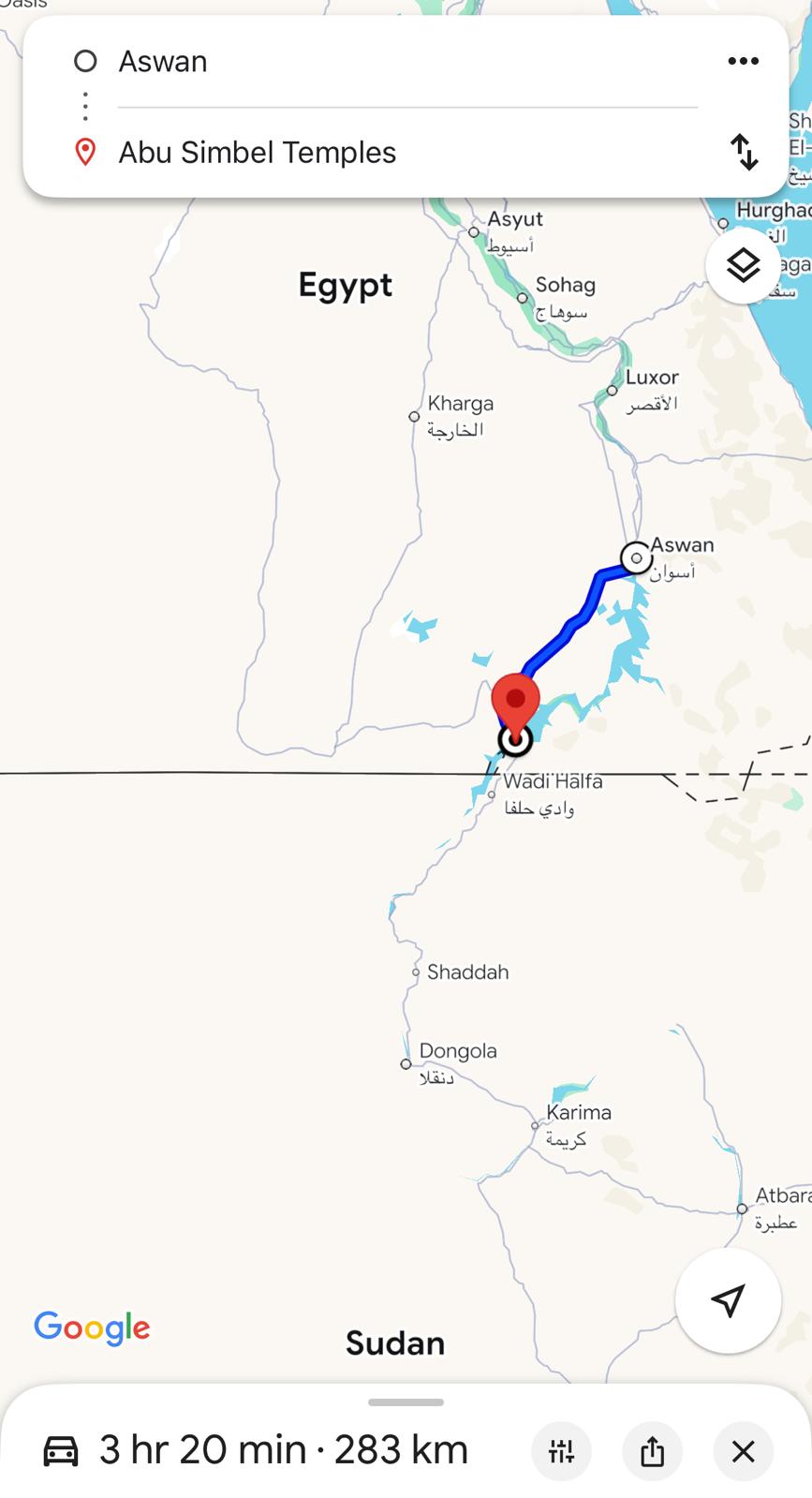
The road from Aswan to Abu Simbel crosses the Nubian Desert, offering a scenic journey through the Sahara.
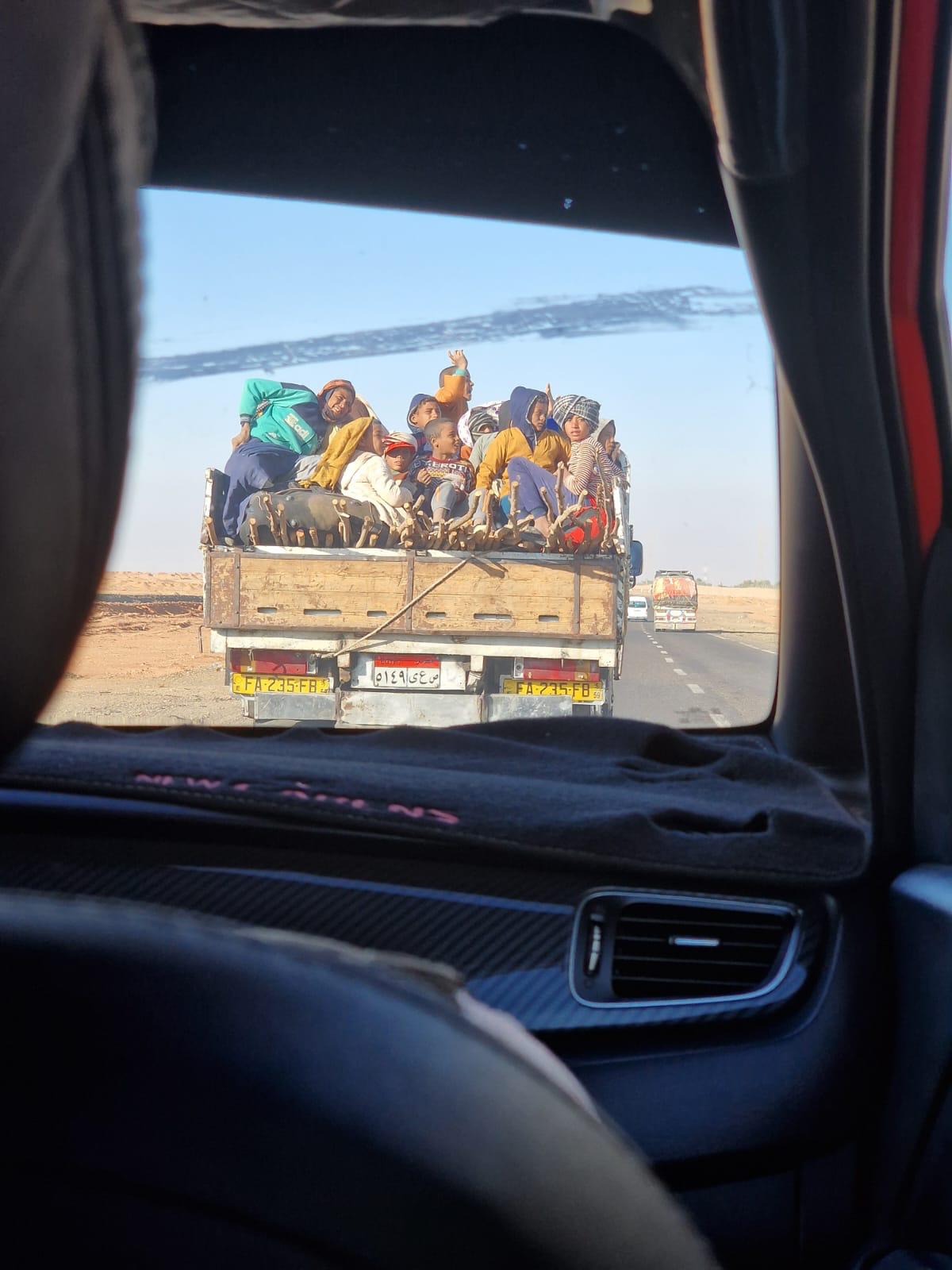
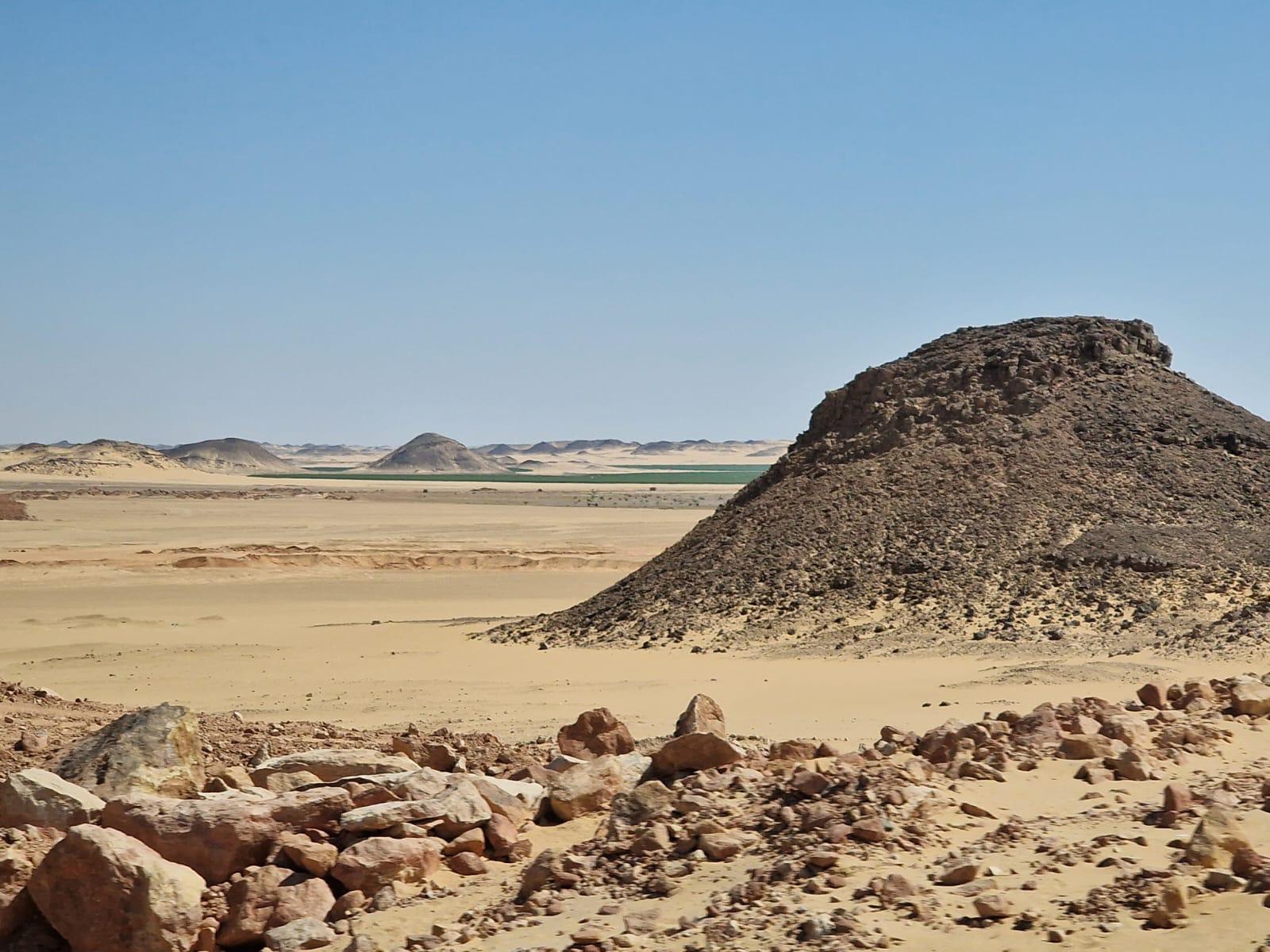
Arriving at the Abu Simbel - view on the Lake Nubia on the boarder with Sudan.
.jpeg)
Abu Simbel - showcases two stunning temples considered masterpieces of ancient Egypt. The Temple of Ramesses II and the Temple of Queen Nefertari symbolically unite Ramesses, Nefertari, Hathor, and the Sun God.
.jpeg)
.jpeg)
Abu Simbel is a temple built by Ramesses II (c. 1279-1213 B.C.E.) in ancient Nubia, where he wished to demonstrate his power and his divine nature. Colossal (65 feet/20 meters high) statues of him sit in pairs flanking the entrance.
.jpeg)
Inside the Abu Simbel Temple:
In the late afternoon, we travelled to Temple of Kom Ombo to see the sunset.
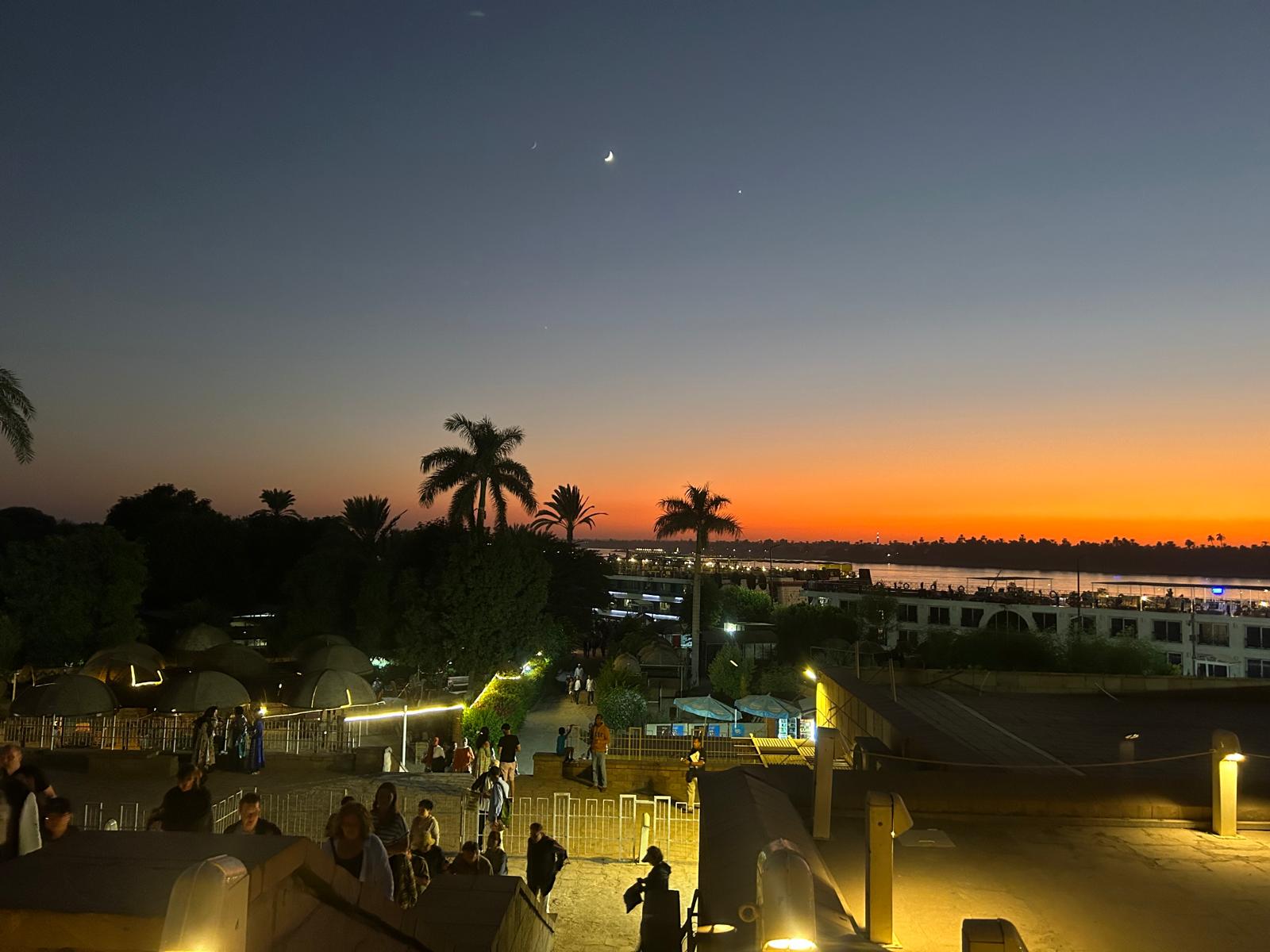
The Temple of Kom Ombo, uniquely overlooking the Nile, features a rare double entrance dedicated to two gods: Sobek, the crocodile-headed god of fertility, and Haroeris, the falcon-headed Horus. Its distinctiveness also stems from its association with ancient medicine and the region's large sugar-cane production.
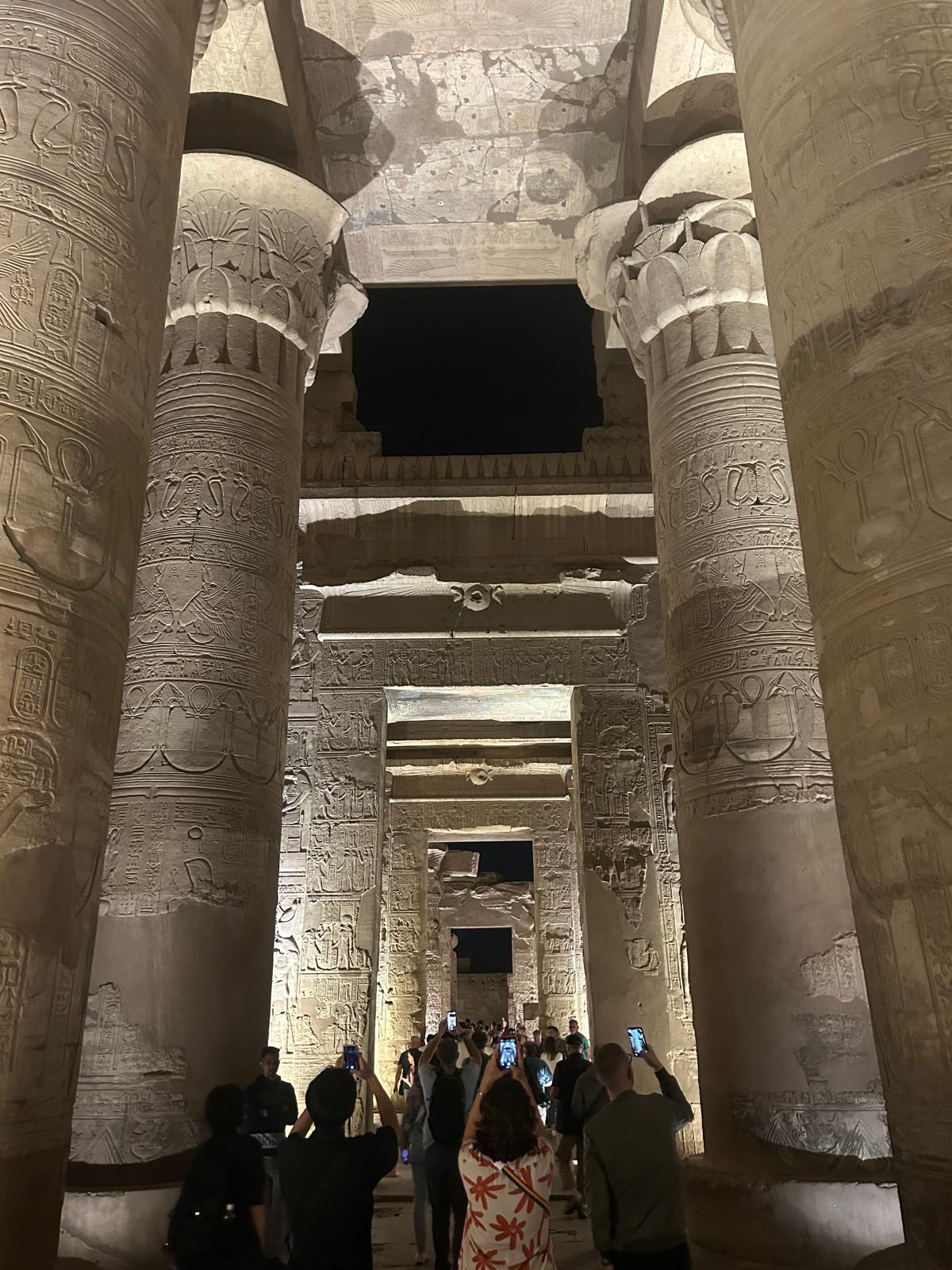
Inside the Temple
Day 3 of the cruise, explored some of the most iconic and well-preserved temples in Egypt, uncovering ancient myths, architectural marvels, and sacred spaces dedicated to powerful deities: Temple of Horus, Temple of Karnak, Luxor Temple.
We started by sightseeing at the Temple of Horus in Edfu, then sailed to Luxor to visit the Karnak and Luxor Temples.
Temple of Horus: Visited the majestic Temple of Horus in Edfu, where Horus avenged his father Osiris—one of the best-preserved cult temples in Egypt.
Temple of Karnak: Explored the vast Karnak Temple complex, featuring the grand avenue of sphinxes, colossal columns, towering obelisks, and Egypt’s largest sacred lake.
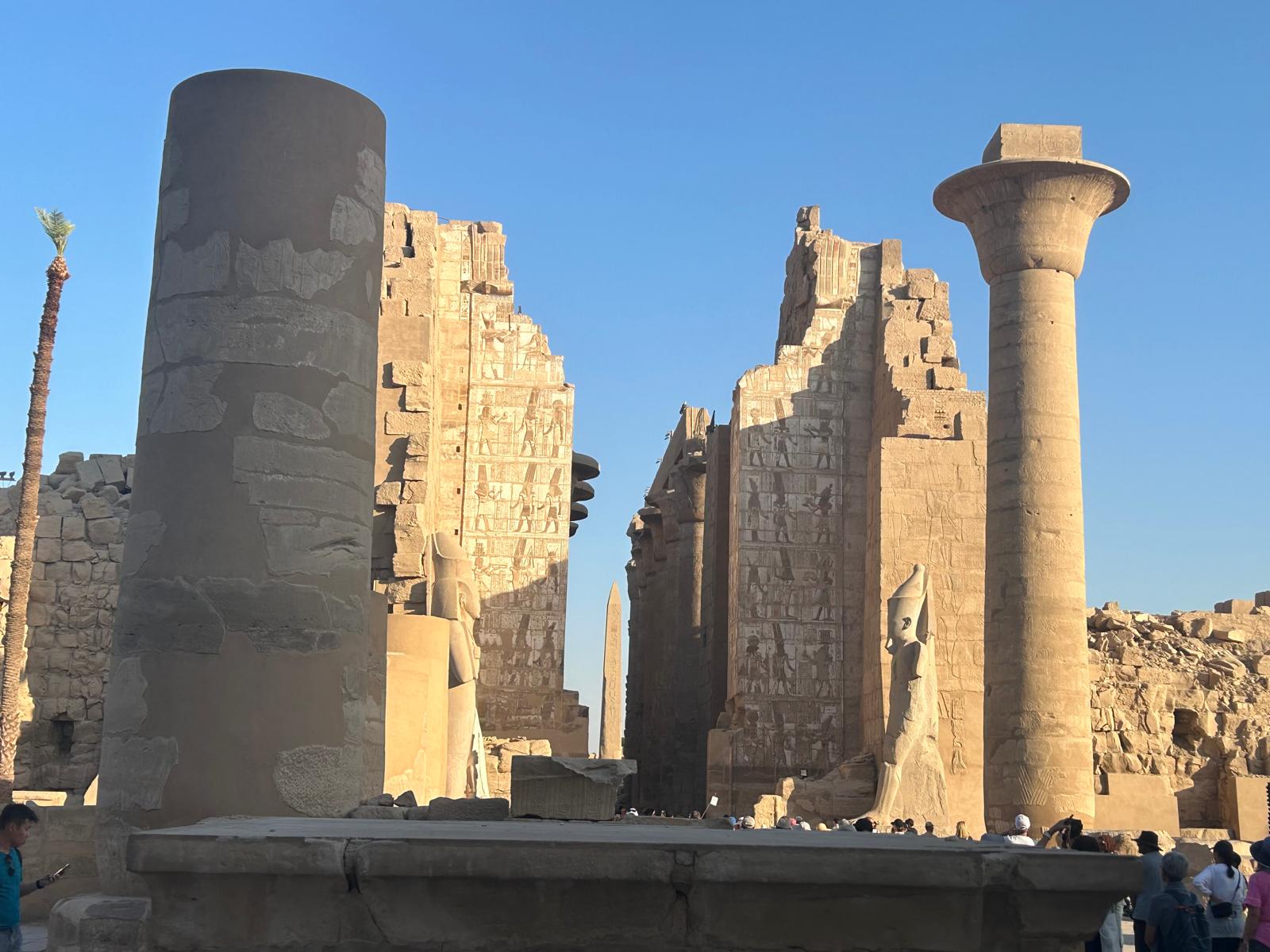

The Obelisk at Karnak Temple

The sunset at the Karnak Temple
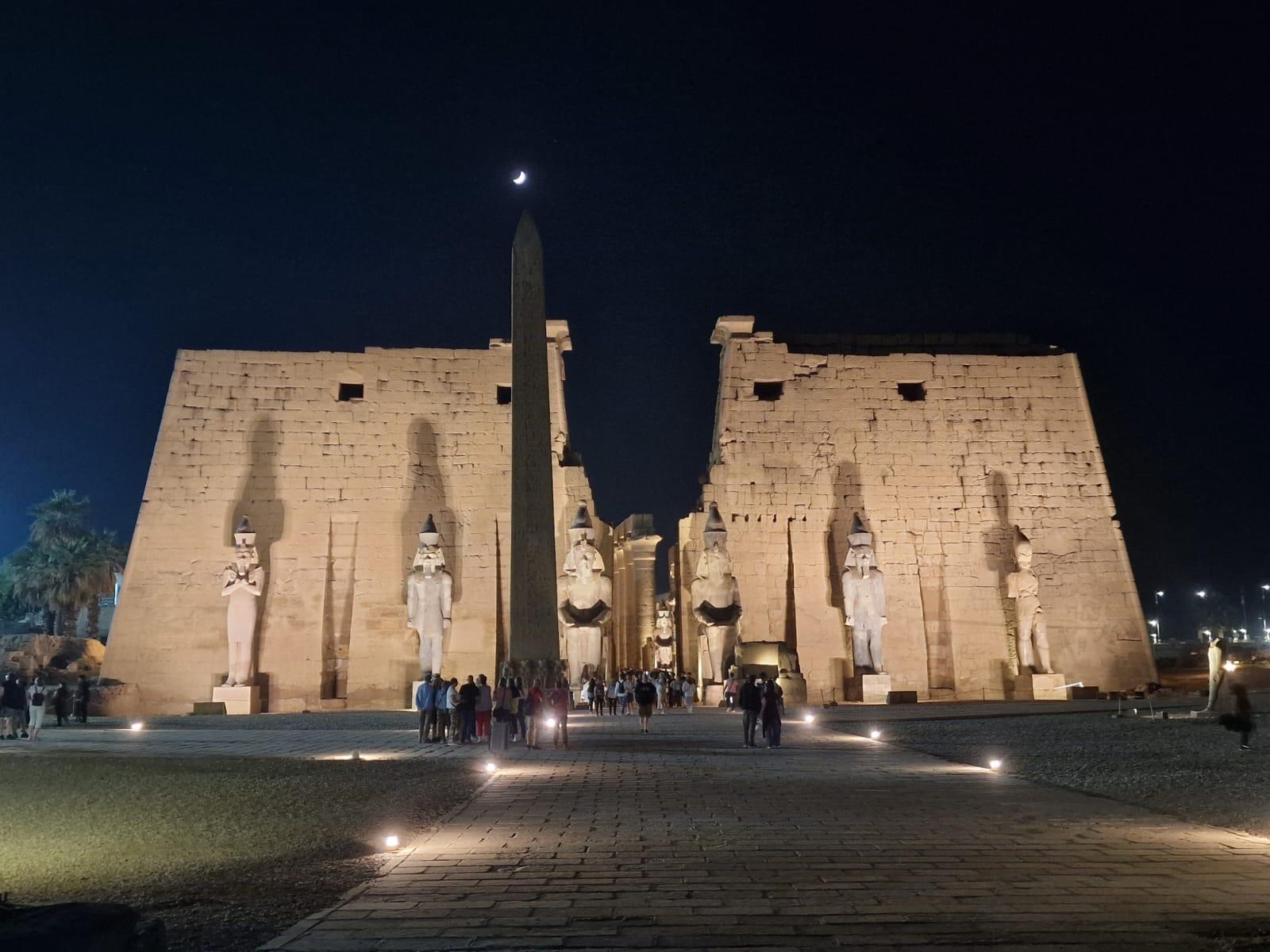
The Luxor Temple: built by famed pharaohs and dedicated to the sun god Amun Re.
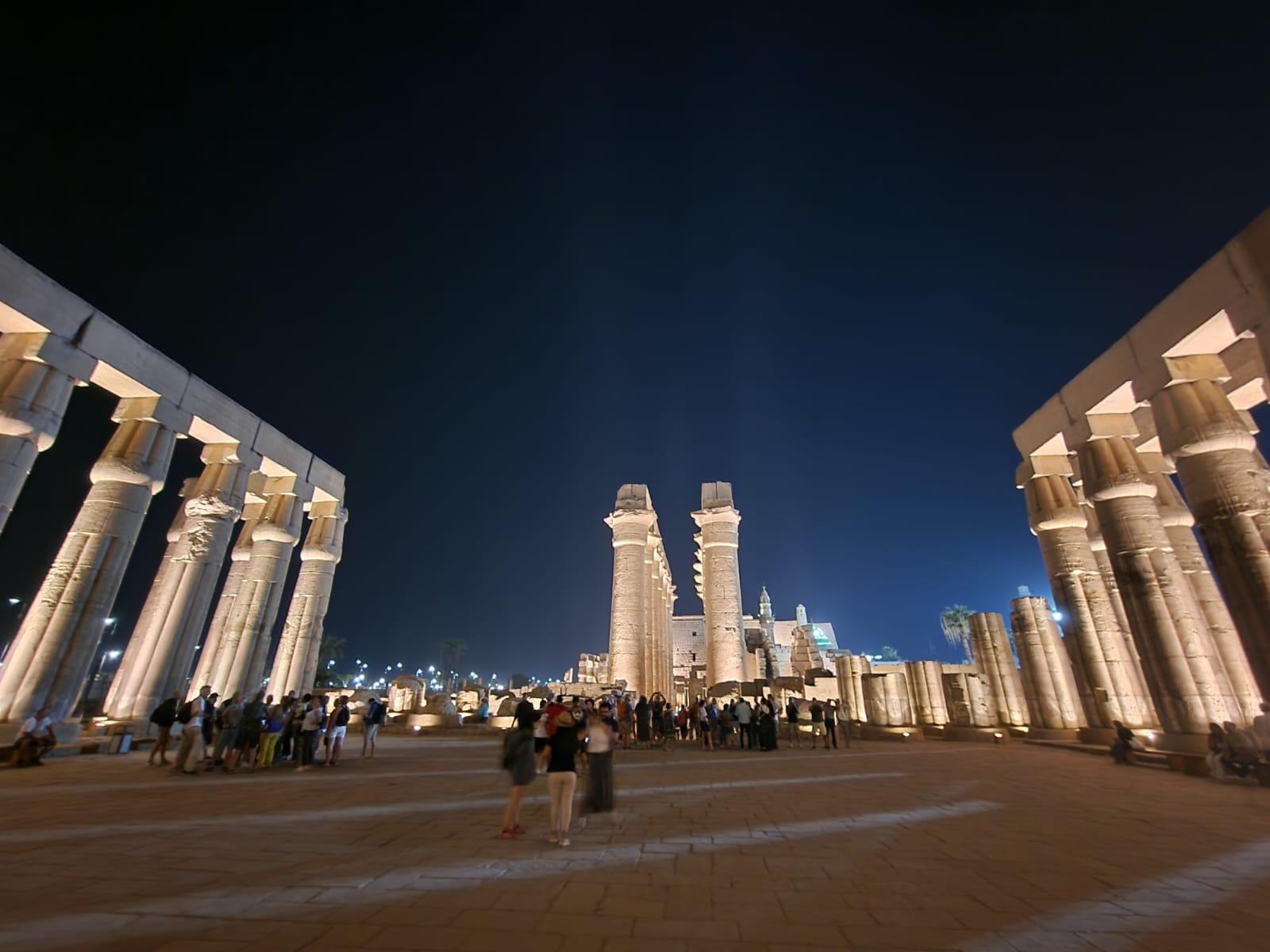
On the Day 4 and final day of the cruise, disembarkation was in Luxor, and we started very early for an optional tour at an additional cost of $100. Since we wanted to catch the sunrise, we had to be there by 6 a.m. We were picked up from the hotel and driven to the port, where we took a boat to the balloon launch site. We paid the travel agent directly, but the tour can also be booked via a bit cheaper $65 Viator – Hot Air Balloon. It was worth every penny!
Preparing for the fly. Every baloon's basket accomodated around 25 people.
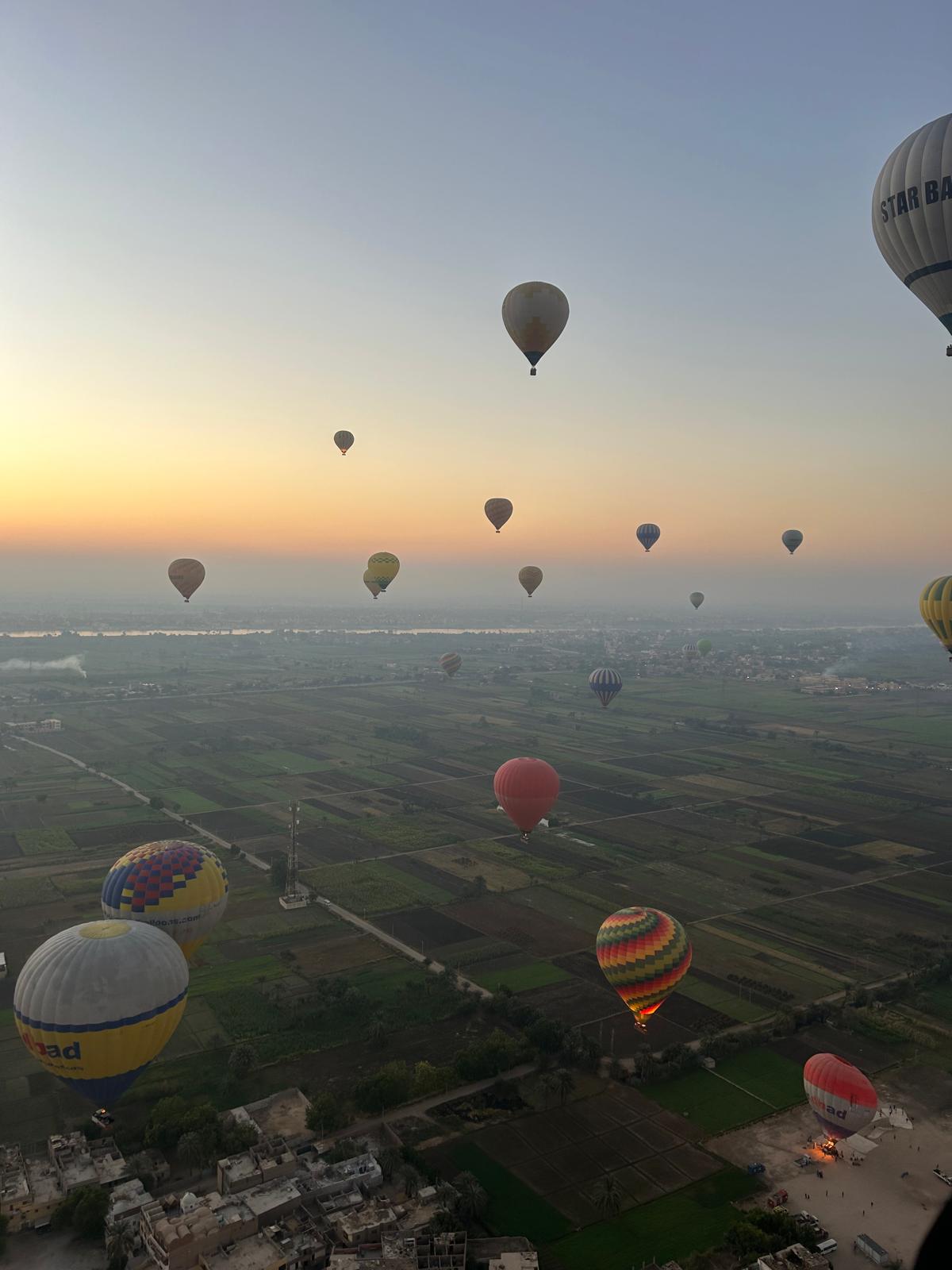
Stunning sunrise
.jpeg)
The Valley of the kings view.
.jpeg)
The Valley of the Kings – where you will see the tombs of the pharaohs and the amazing wall paintings, which are still very well preserved to this day. The guide will recommend the three best tombs to visit. Tutankhamun’s tomb requires an additional entry fee of $10.
.jpeg)
Rameses III's tomb
Tutankhamun’s tomb is one of the most famous in the Valley of the Kings. Although smaller than other royal tombs, it’s renowned for the incredible treasures found inside and its well-preserved wall paintings. Discovered nearly intact in 1922 by Howard Carter, it offers a rare glimpse into ancient Egyptian burial practices and the wealth of a young pharaoh.
.jpeg)
Inside the Tut's tomb
The Temple of Hatshepsut is a stunning mortuary temple built into the cliffs of Deir el-Bahari. Dedicated to the female pharaoh Hatshepsut, it stands out for its unique terraced architecture and beautiful colonnades, blending harmoniously with the surrounding landscape. Dedicated to the unique queen, who ruled Egypt 20 years alone.
.jpeg)
The Temple of Hatshepsut
.jpeg)
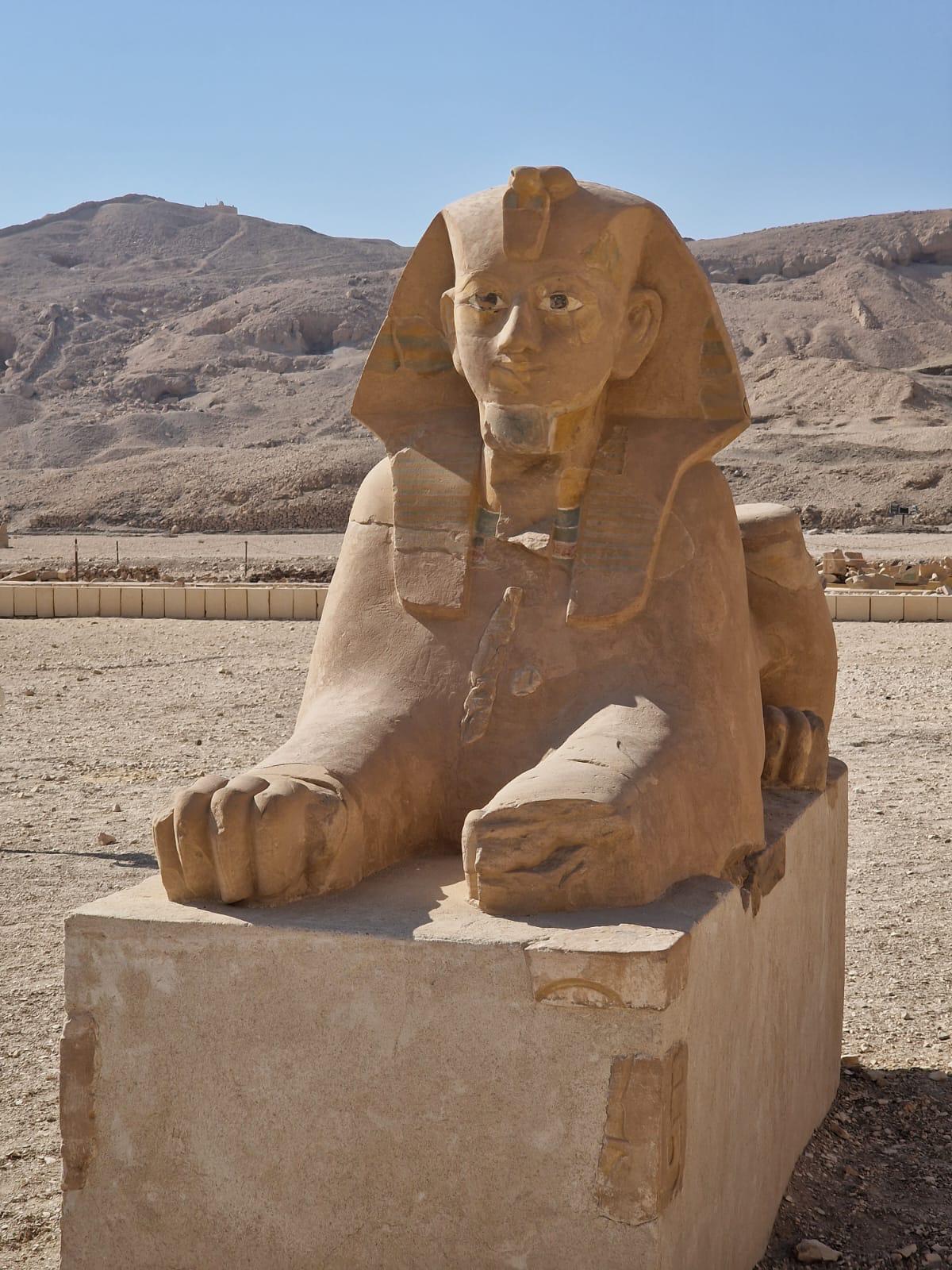
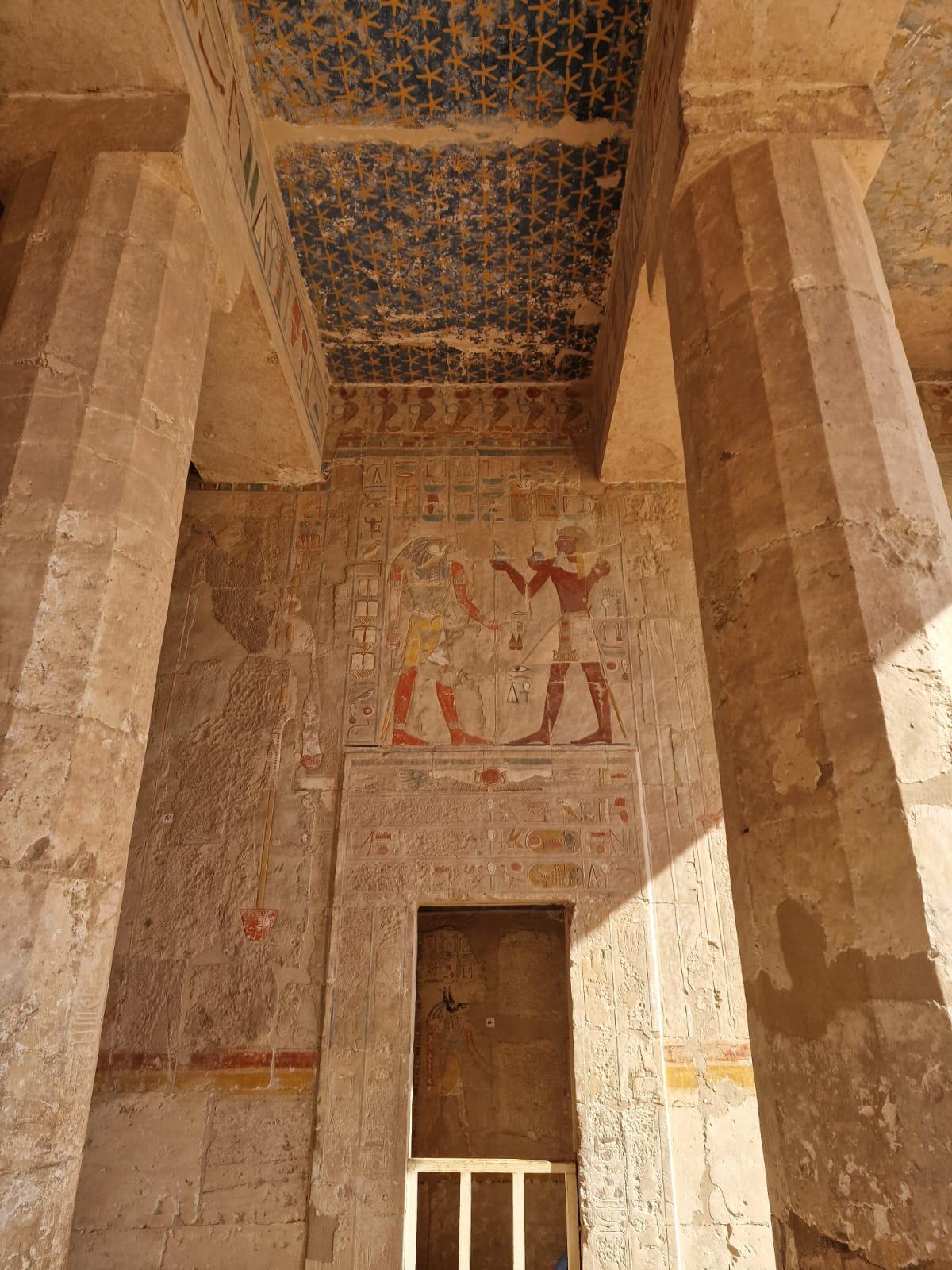
Day 9: Luxor to Hurghada
After stay in Luxor in Pavilon Winter Hotel ($80/night pp), then took a private transfer ($80).
Days 10–12: Hurghada Resport
Our last three days were all about recharging.
We spent them at the same all-inclusive hotel, enjoying the beach, snorkeling, and unlimited food for $150 pp per night.
Final travel day included a return flight to London, UK via EasyJet ($100).


Total Spent for 12 Days in Egypt (Per Person): ~$1,728 - (Excluding Hurghada)
This includes:
✅ Flights
✅ Hotels
✅ Every tour (pyramids, museums, mosques, Nile cruise, balloon ride, and Tutankhamun tomb!)
✅ Airport and in-country transfers
It may also very between how many people you split costs. The more the cheaper! For us it was 2 people only.
How We Kept Costs Low
Booked early and compared flights – saving money by flying mid-week and using low-cost carriers.
Used local tours with pick-up – removing the hassle of taxis and keeping costs transparent.
Mixed travel styles – budget hotels in cities, all-inclusive in Hurghada, and one splurge (the Nile cruise) that packed in several experiences.
Planned meals – aside from Hurghada, we ate at local restaurants for under $5 per meal!
| Category | Details | Cost |
| 3 Flights | London–Cairo Cairo–Luxor Cairo–London | $500 |
| Accommodation | Cairo (4 nights), Aswan/Luxor (2 nights) | $300 |
| Nile Cruise | Accomodation (3 nights) and Meals | $550 |
| Sightseeing & Tours | Giza, Museum, Mosques, Camel ride, transfer, Cairo & Luxor | $168 |
| Optional Tours | Abu Simbel, Hot Air Balloon, Tutankhamun's Tomb | $210 |
| Hurghada Resort* | Accomodation (4 nights) and meals | $600* |









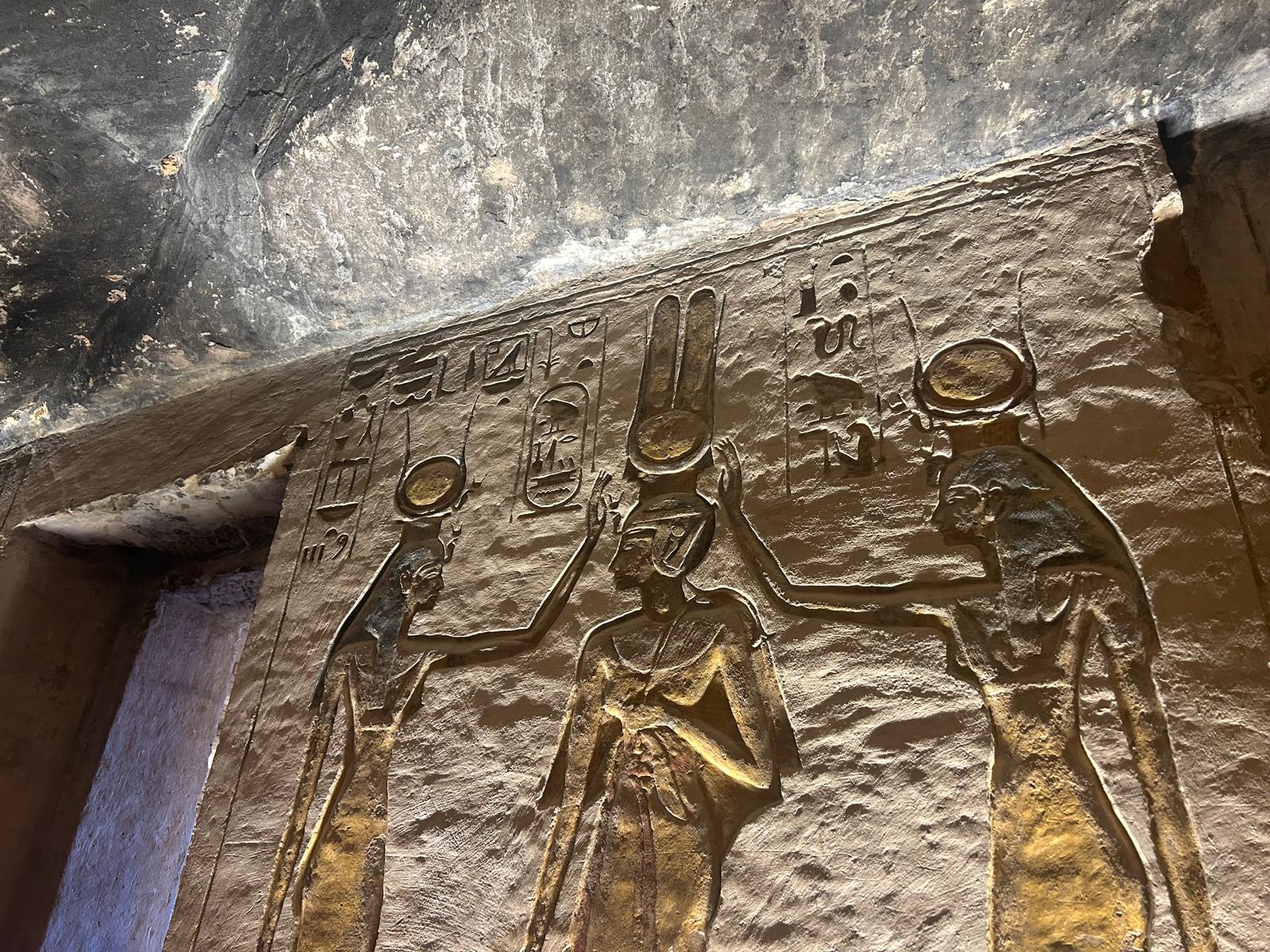
.jpeg)
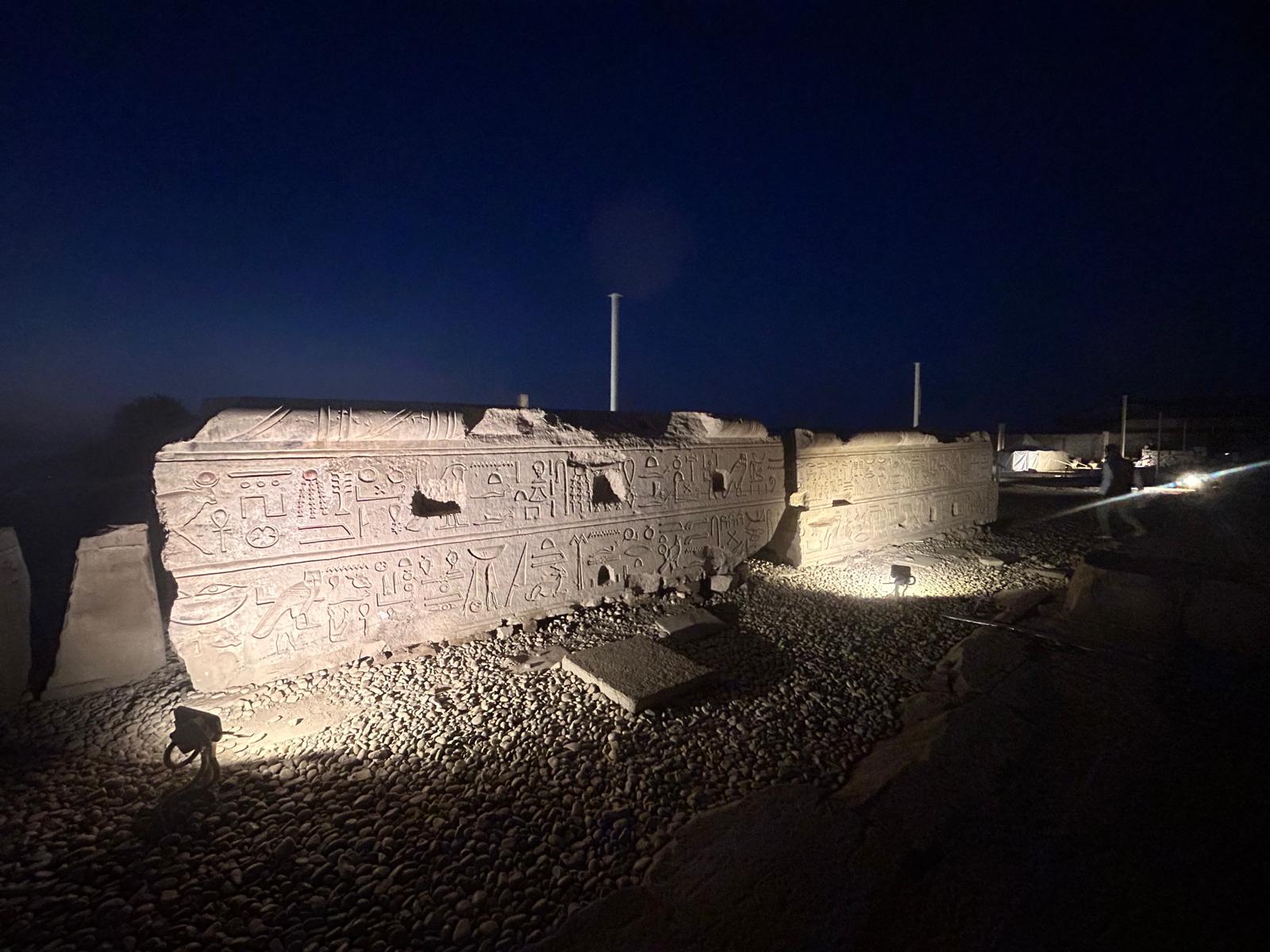
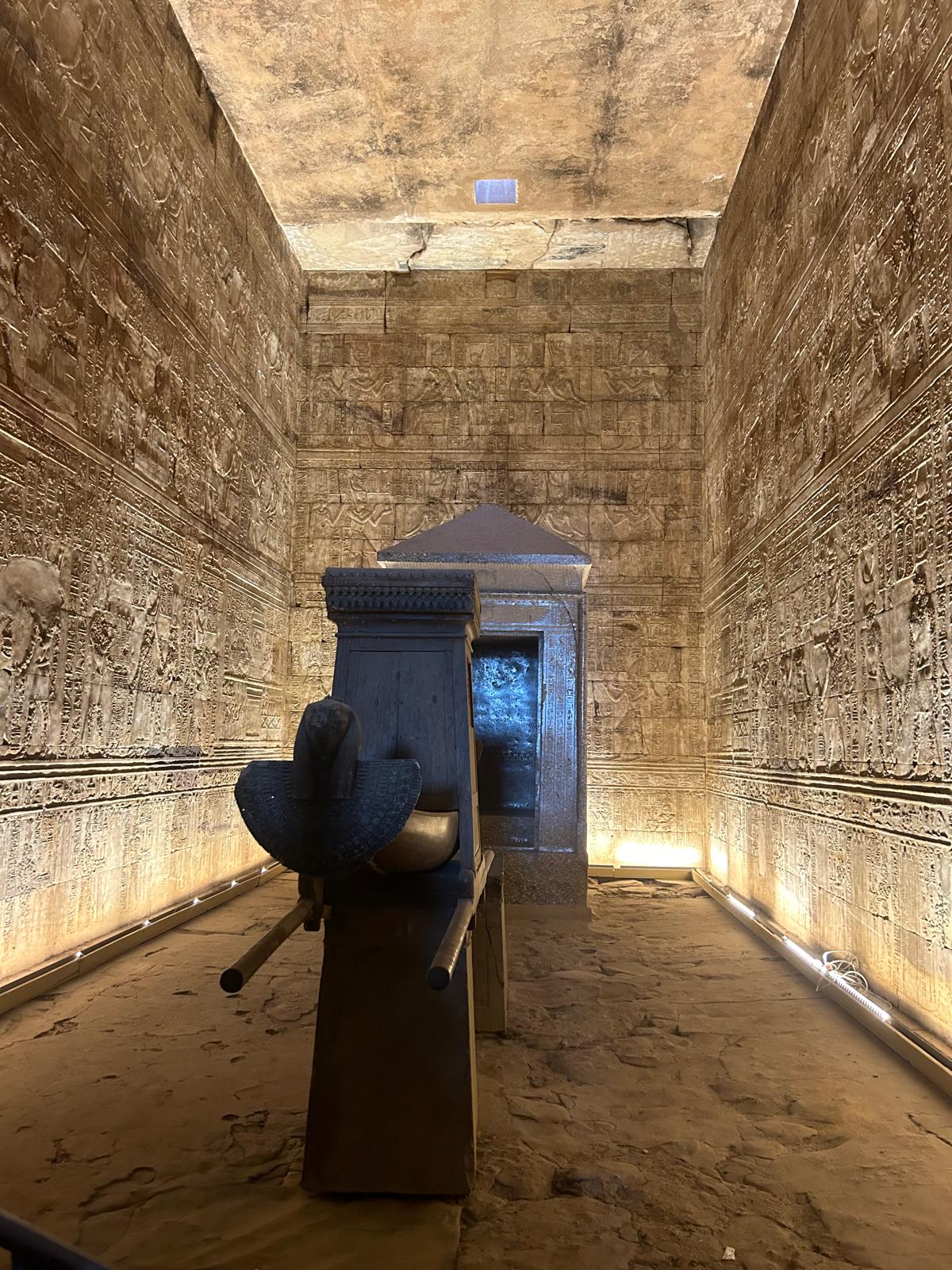
.jpeg)
.jpeg)
.jpeg)
.jpeg)
.jpeg)
